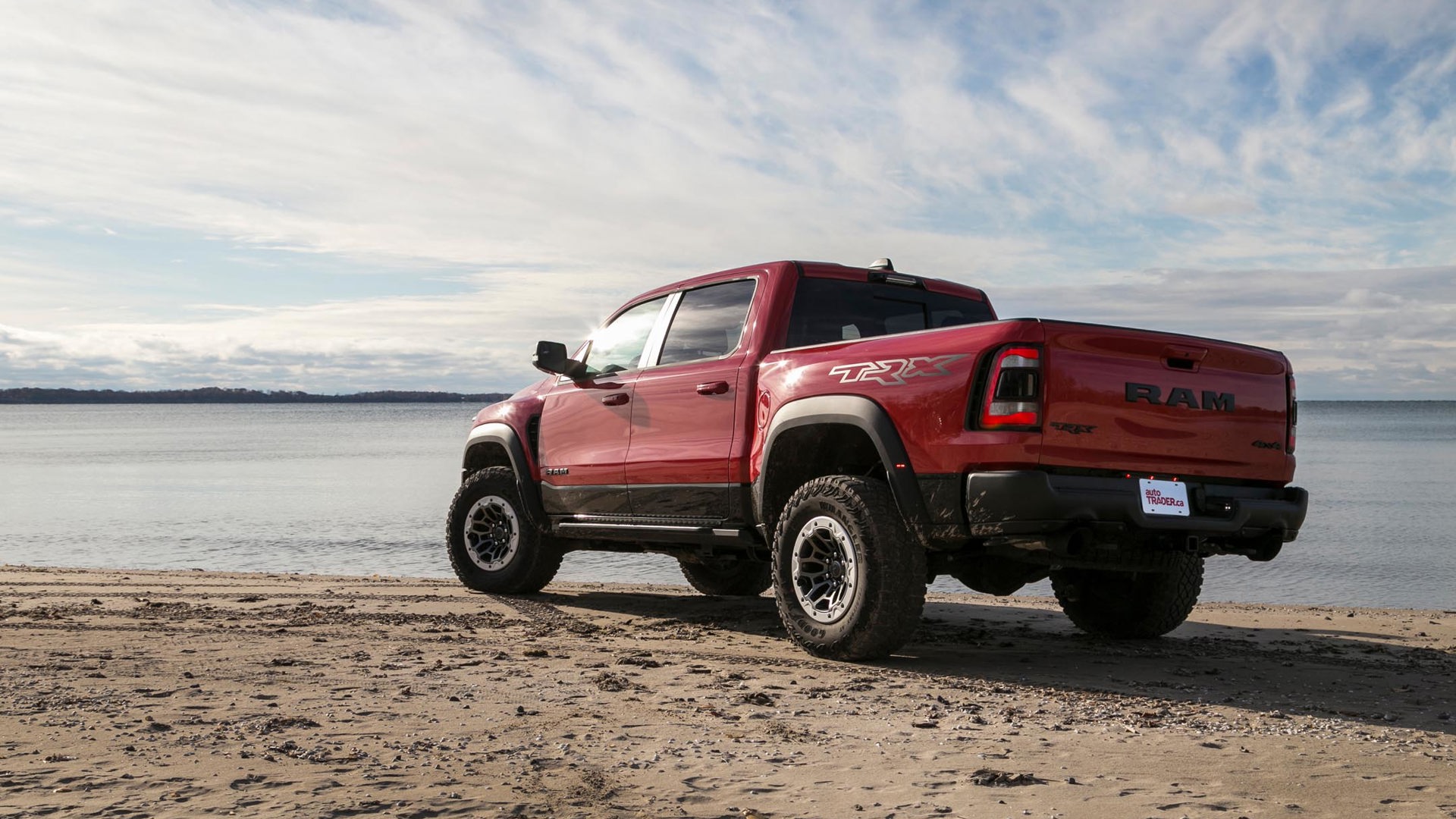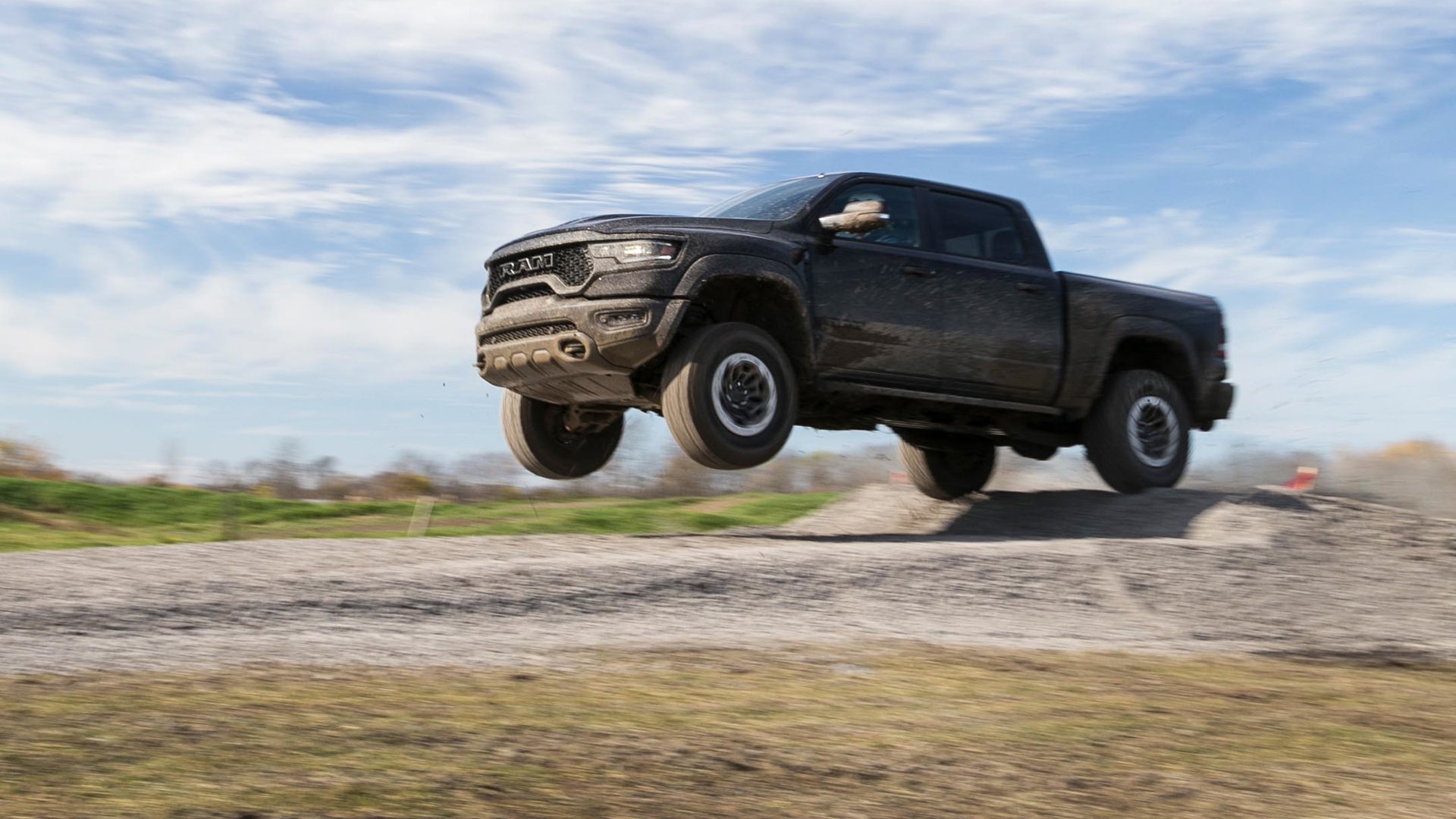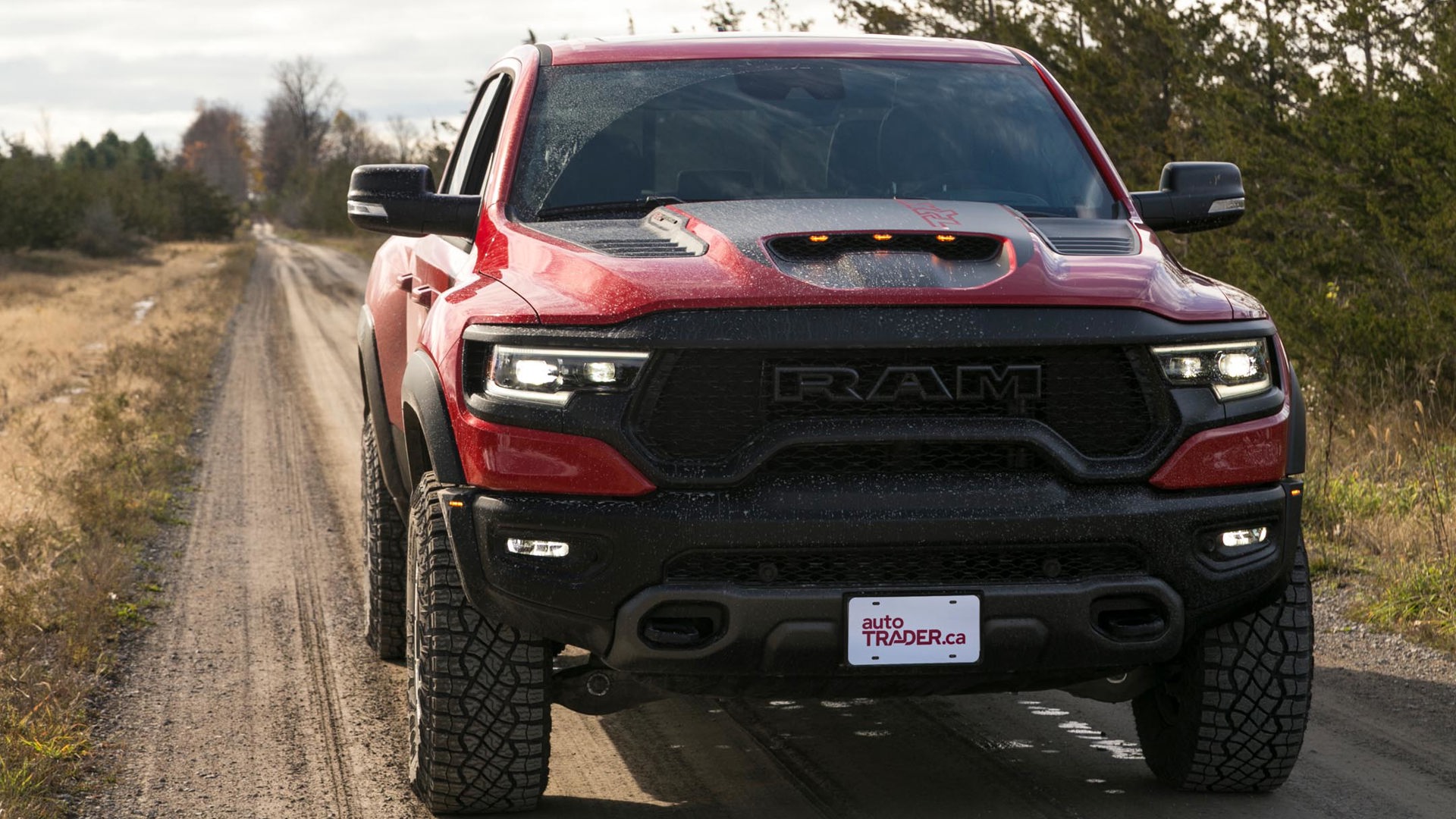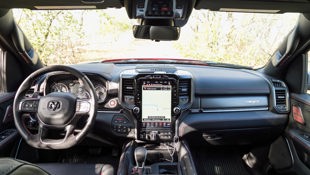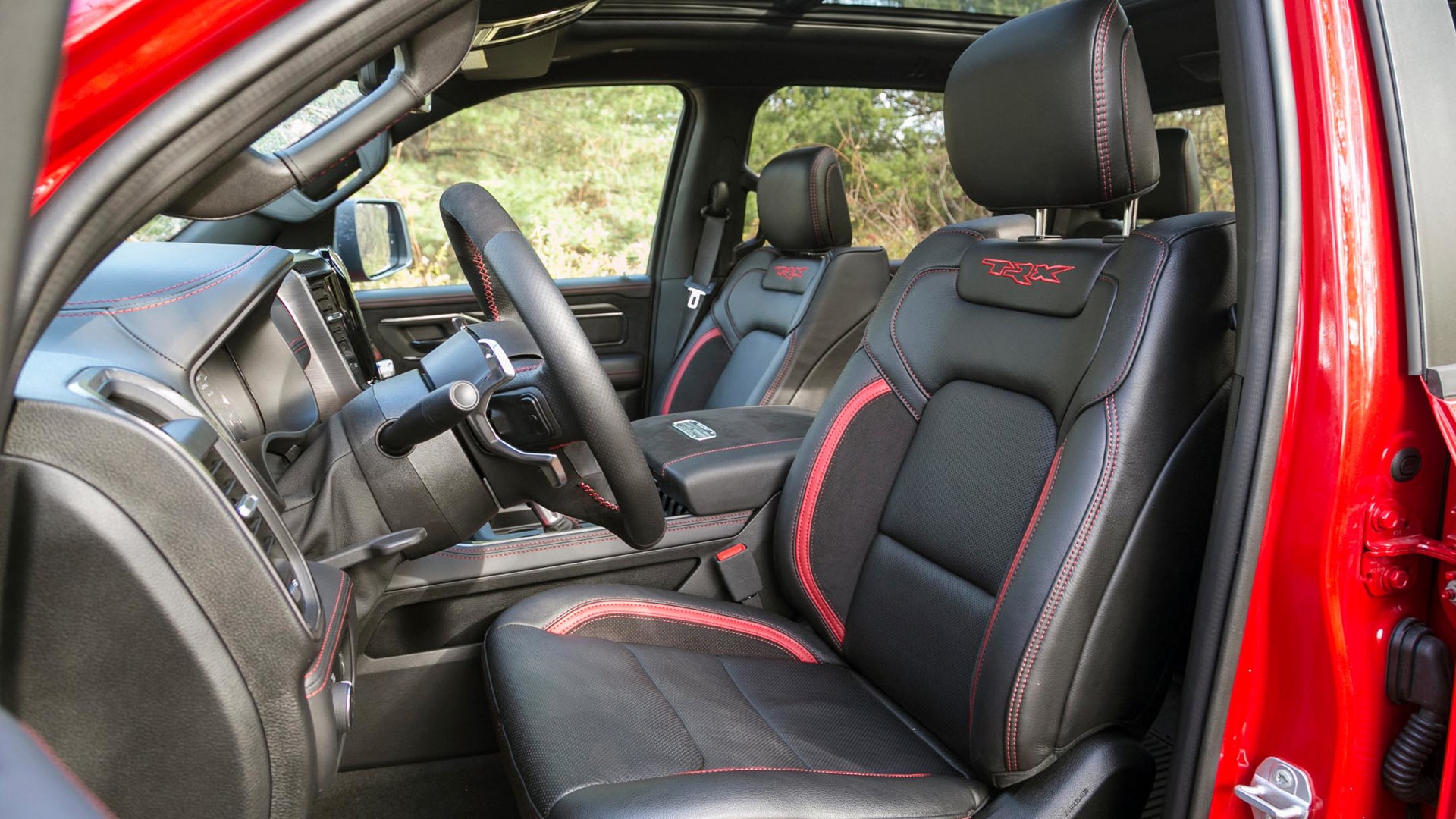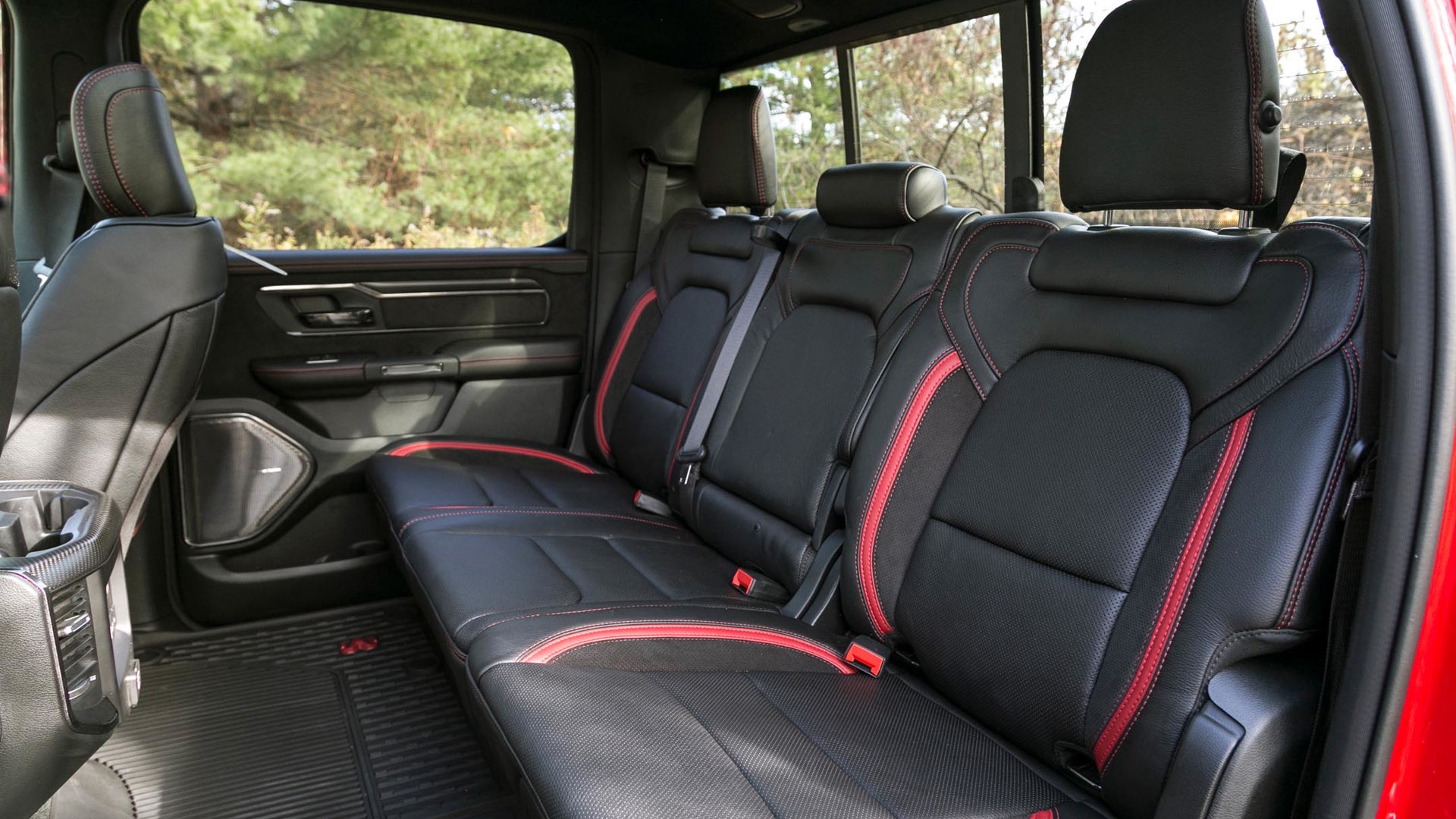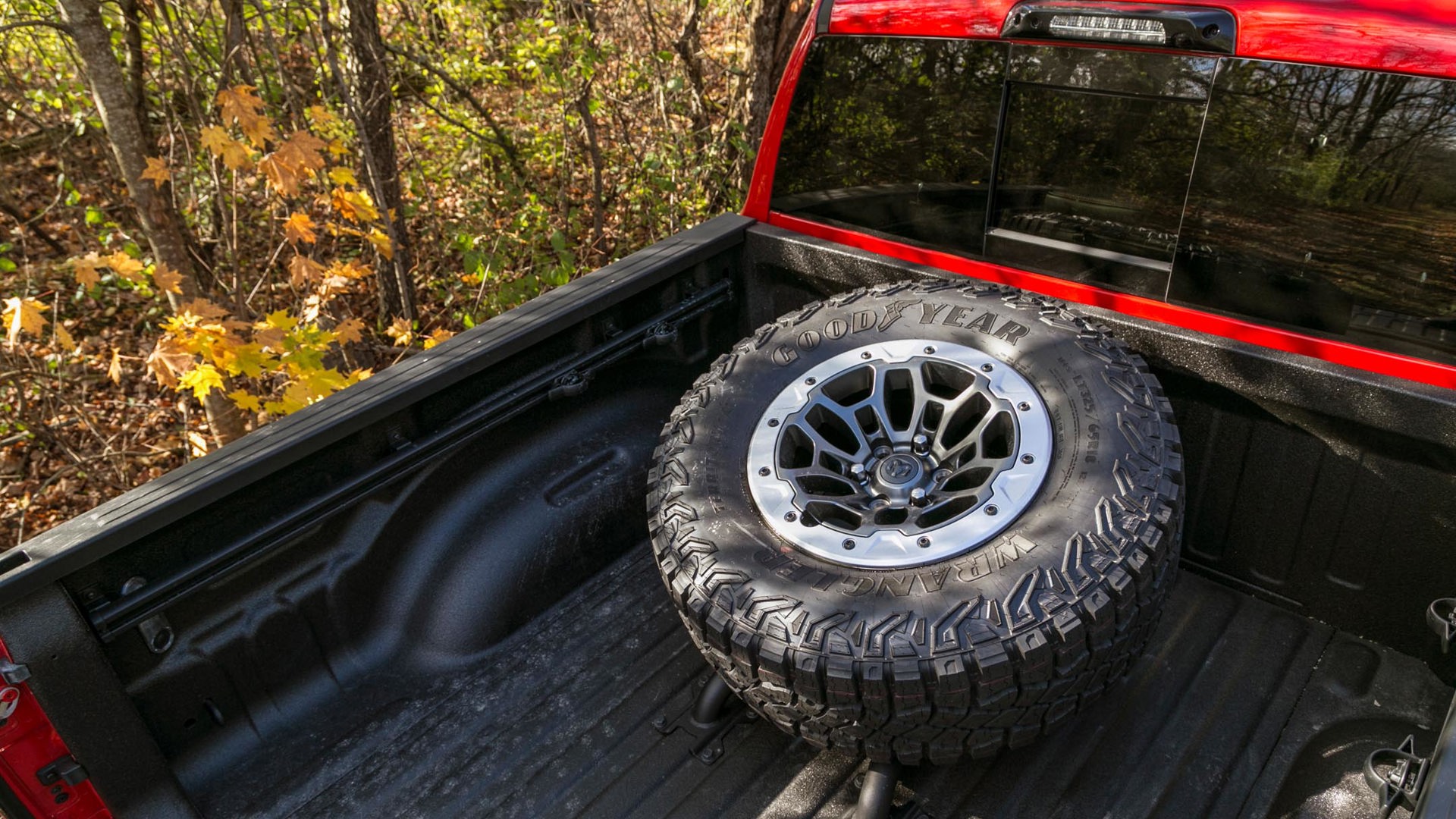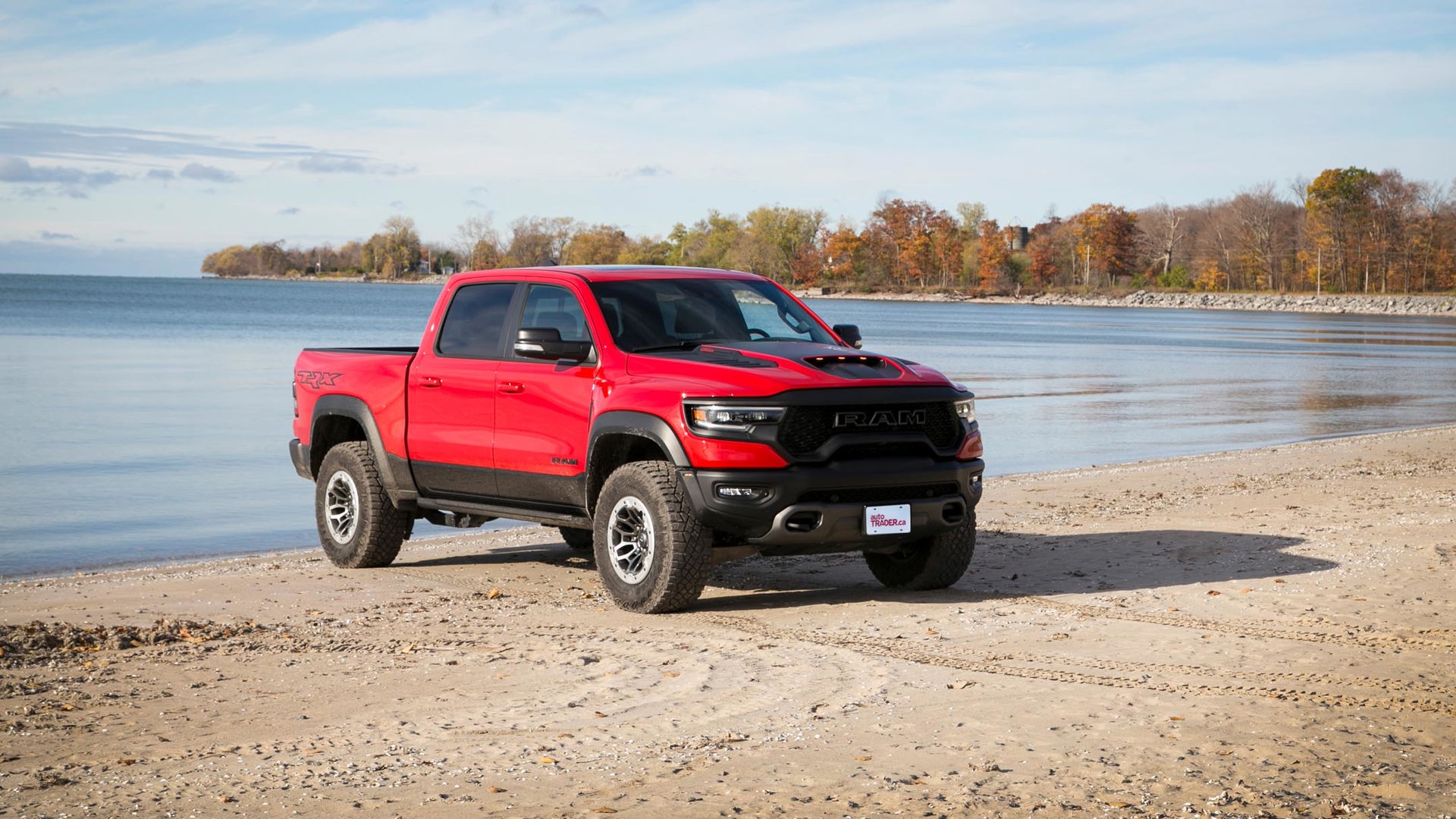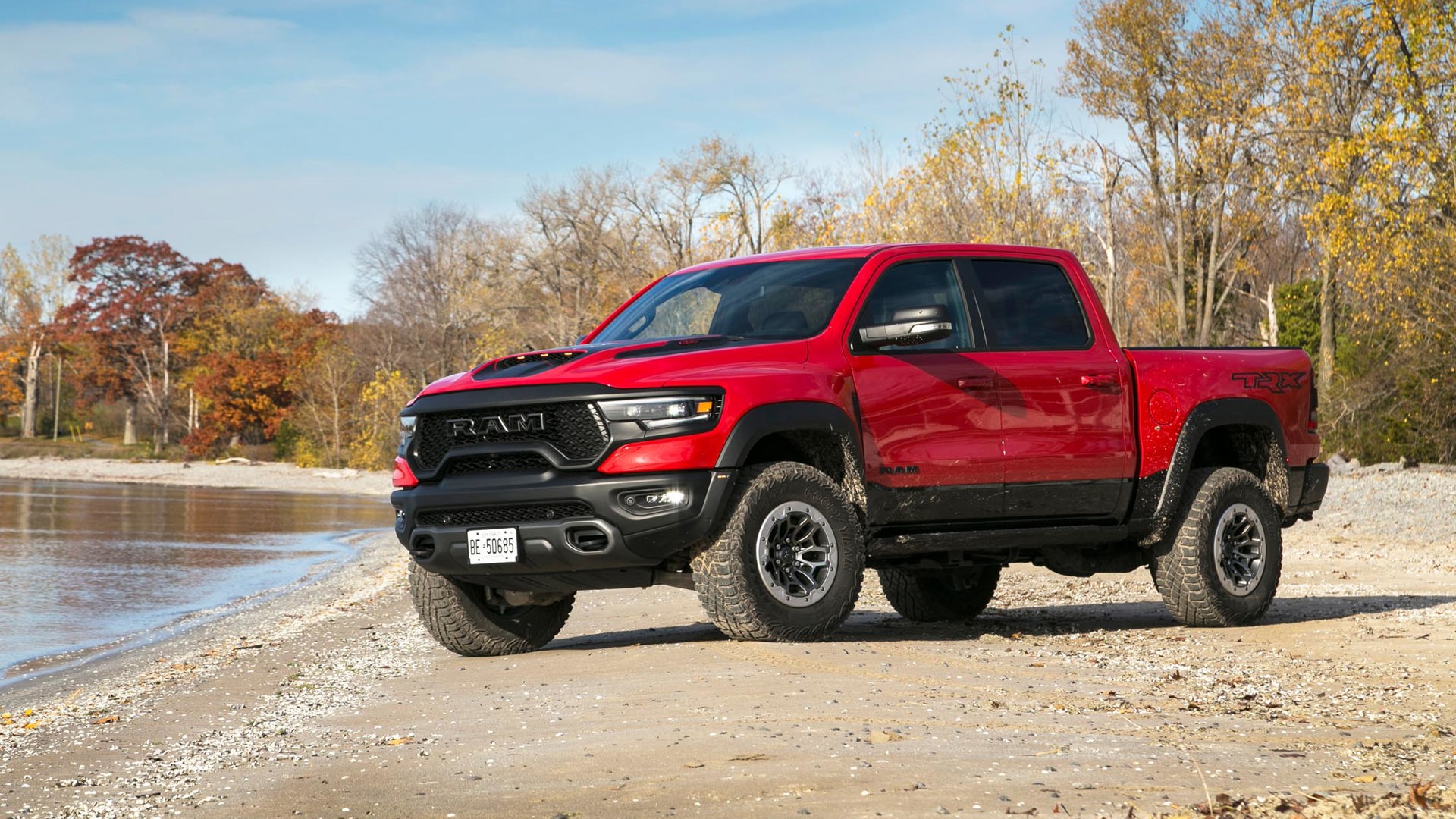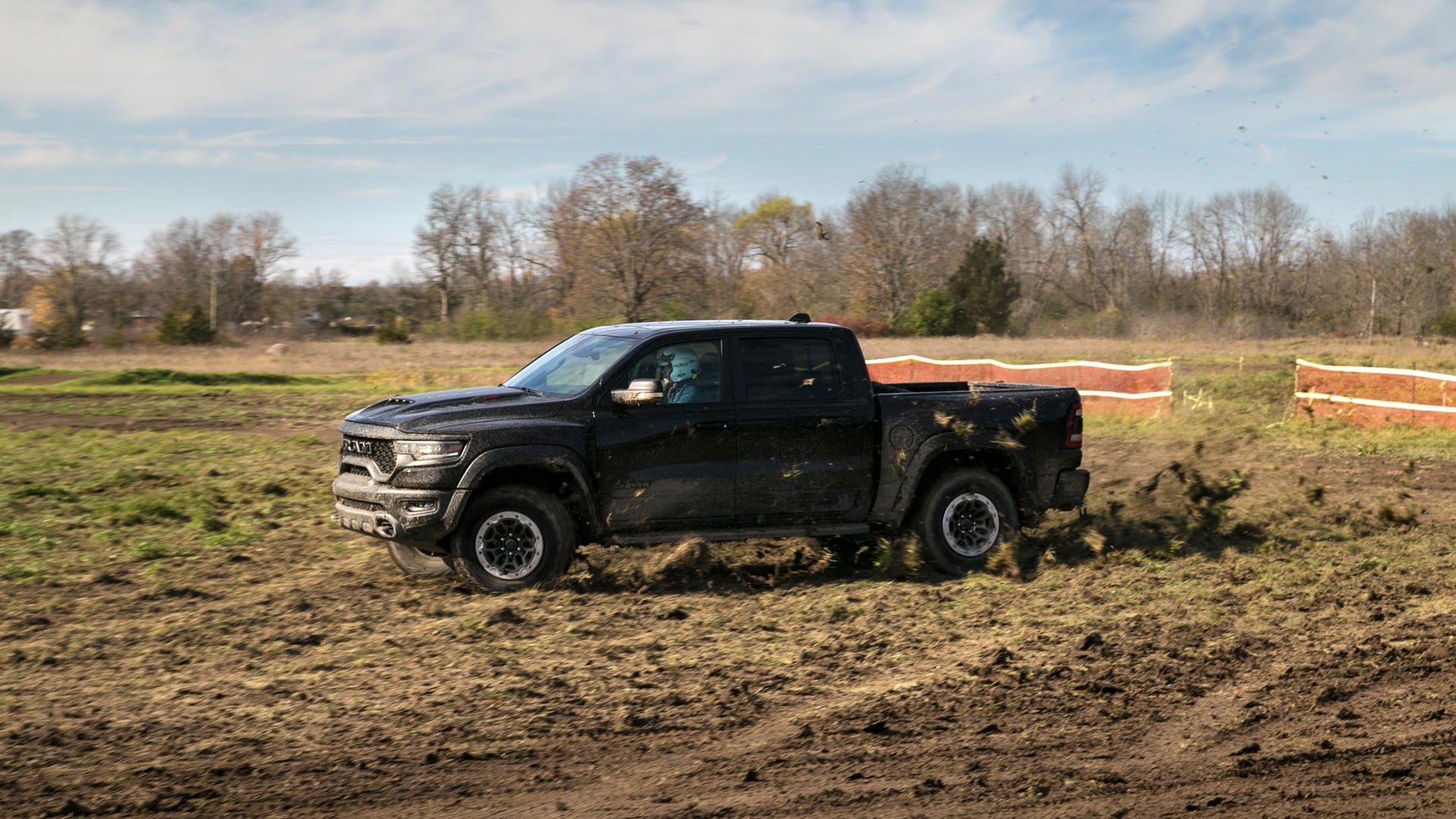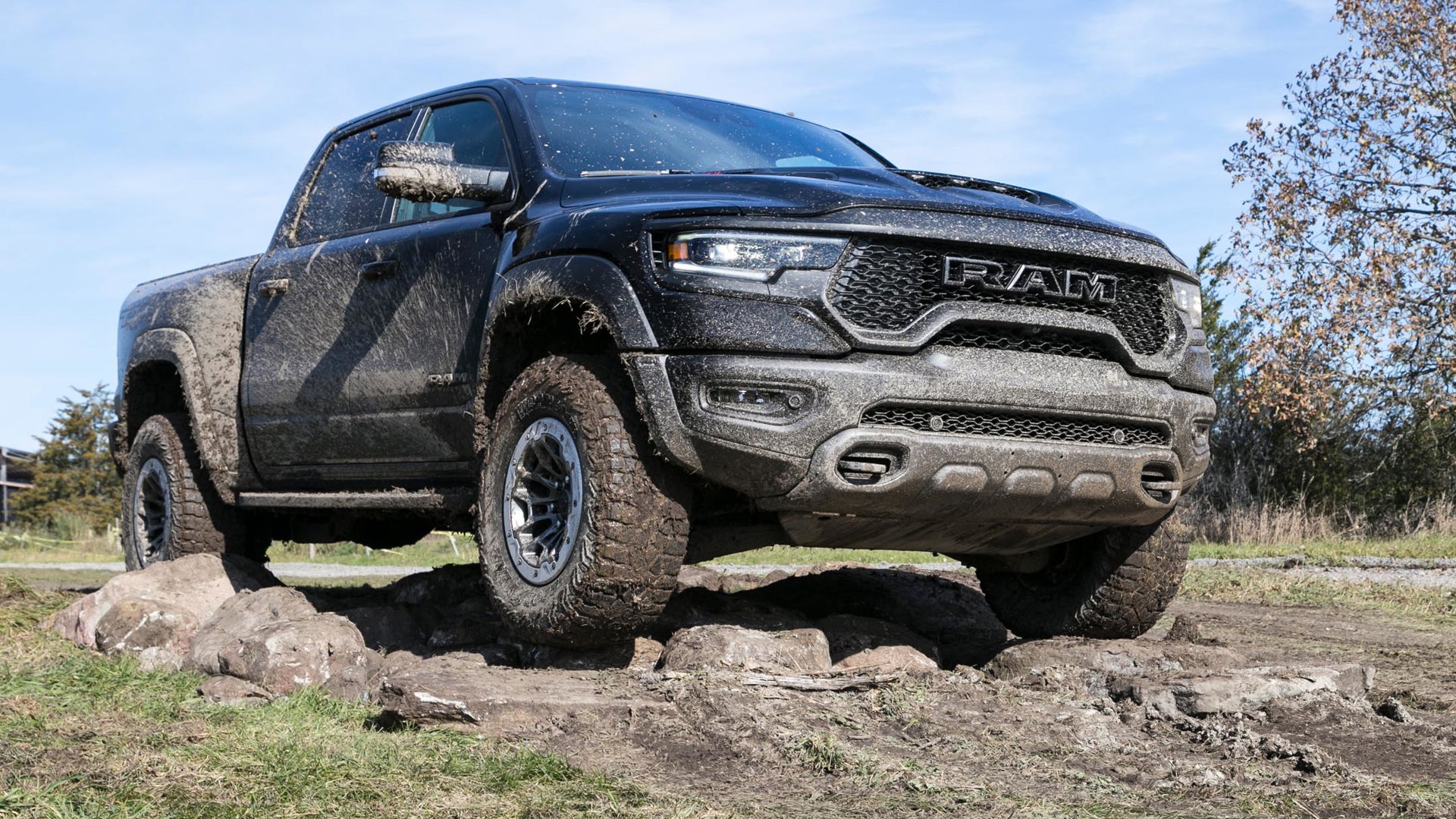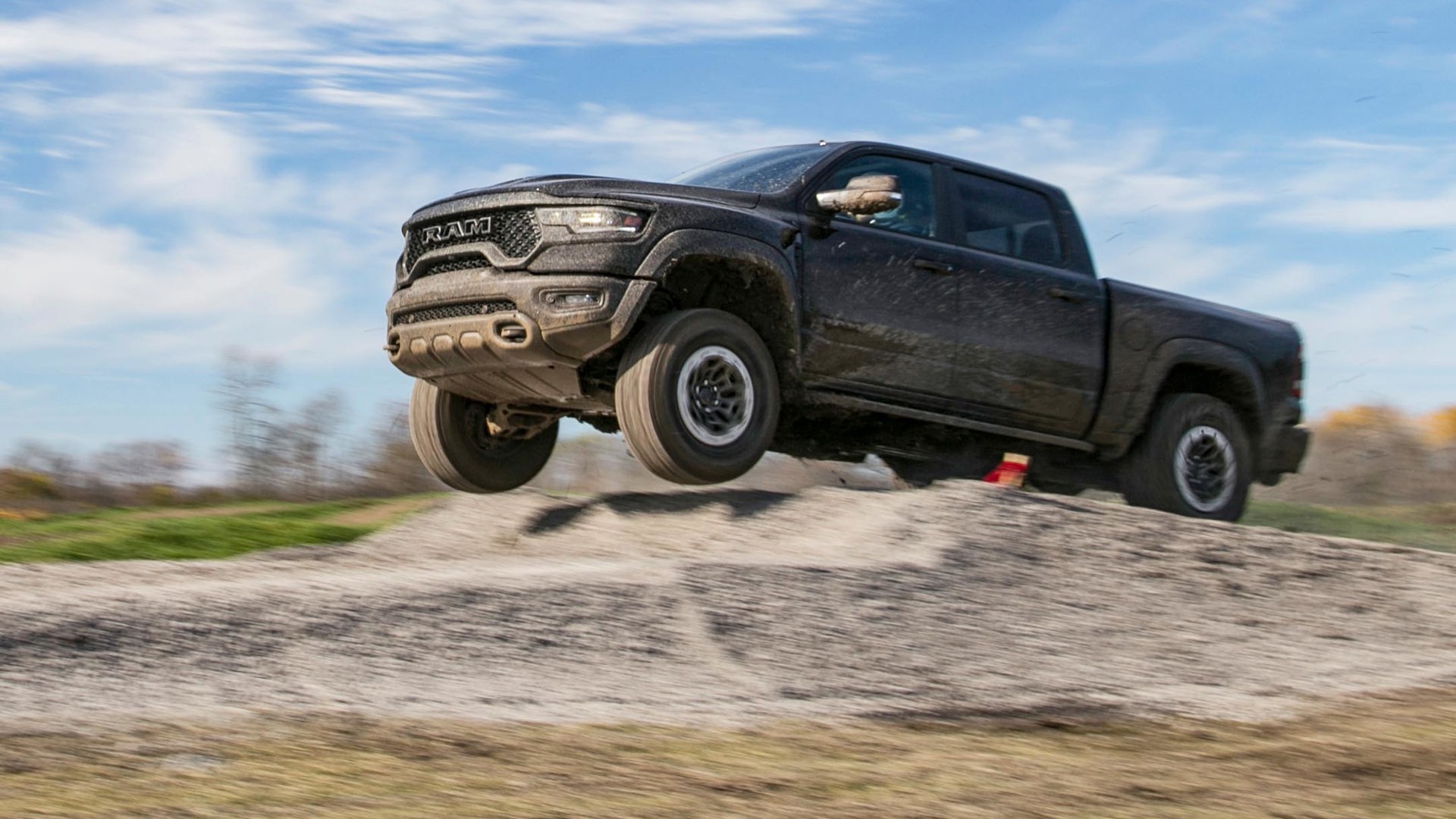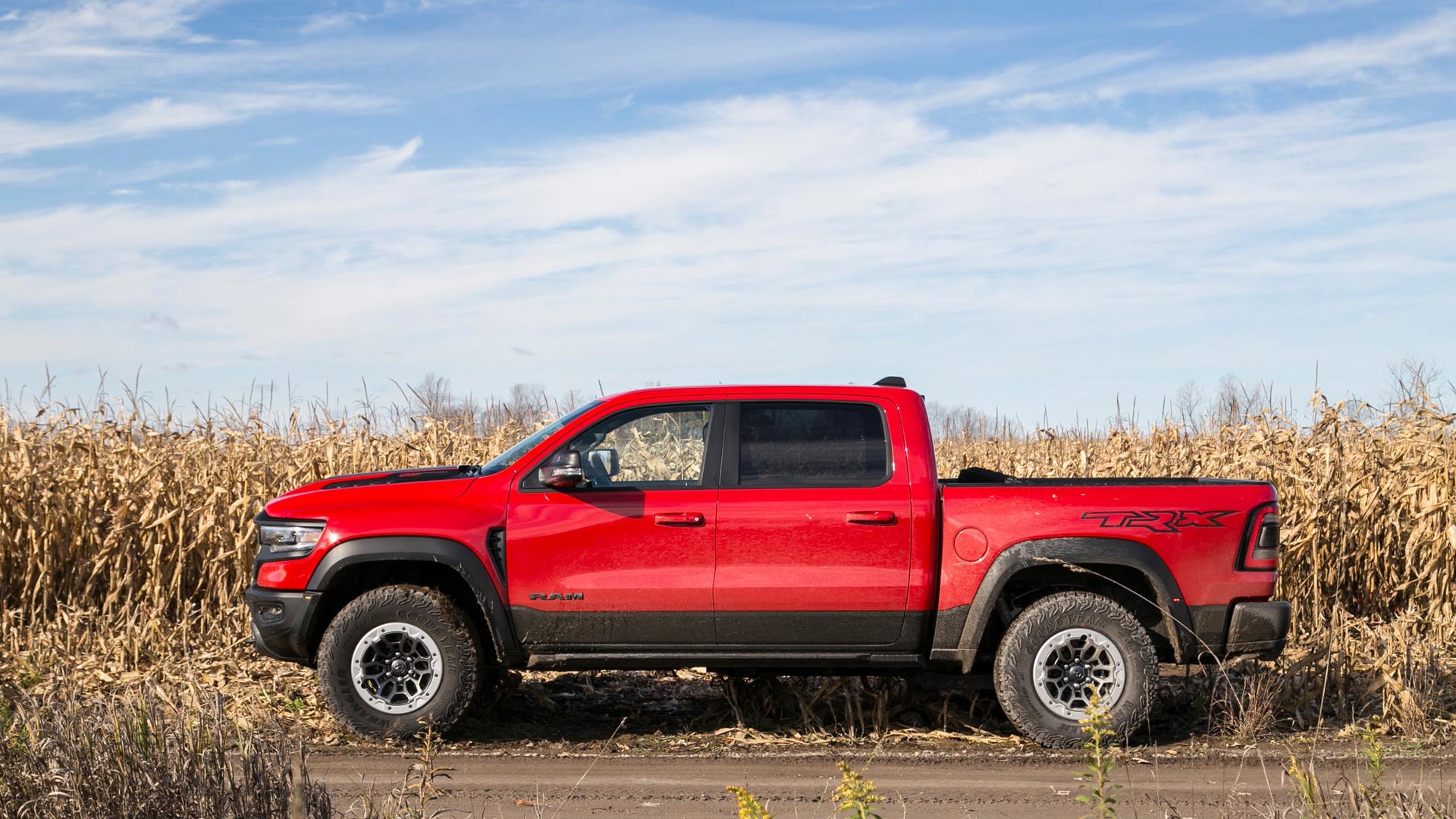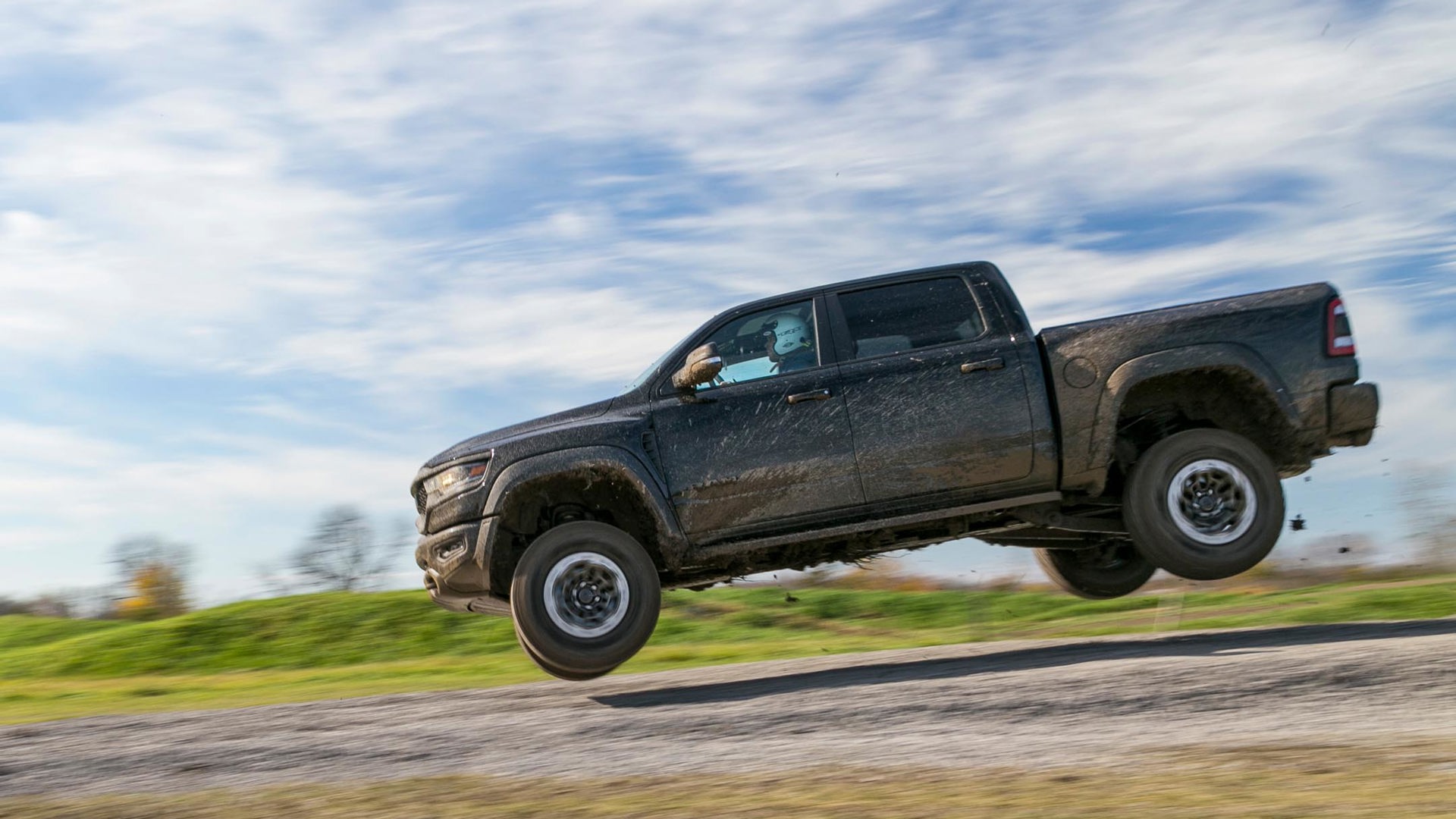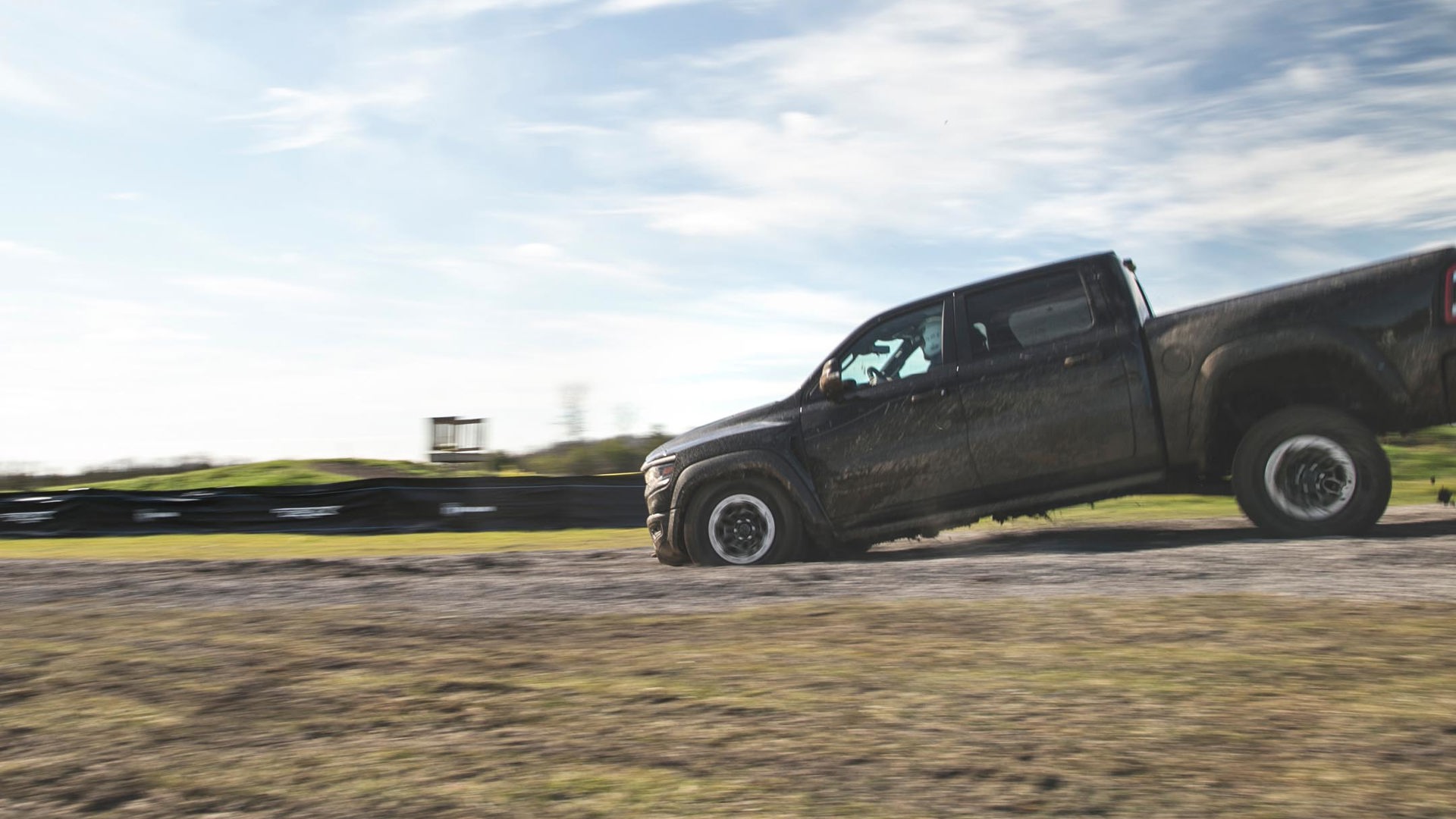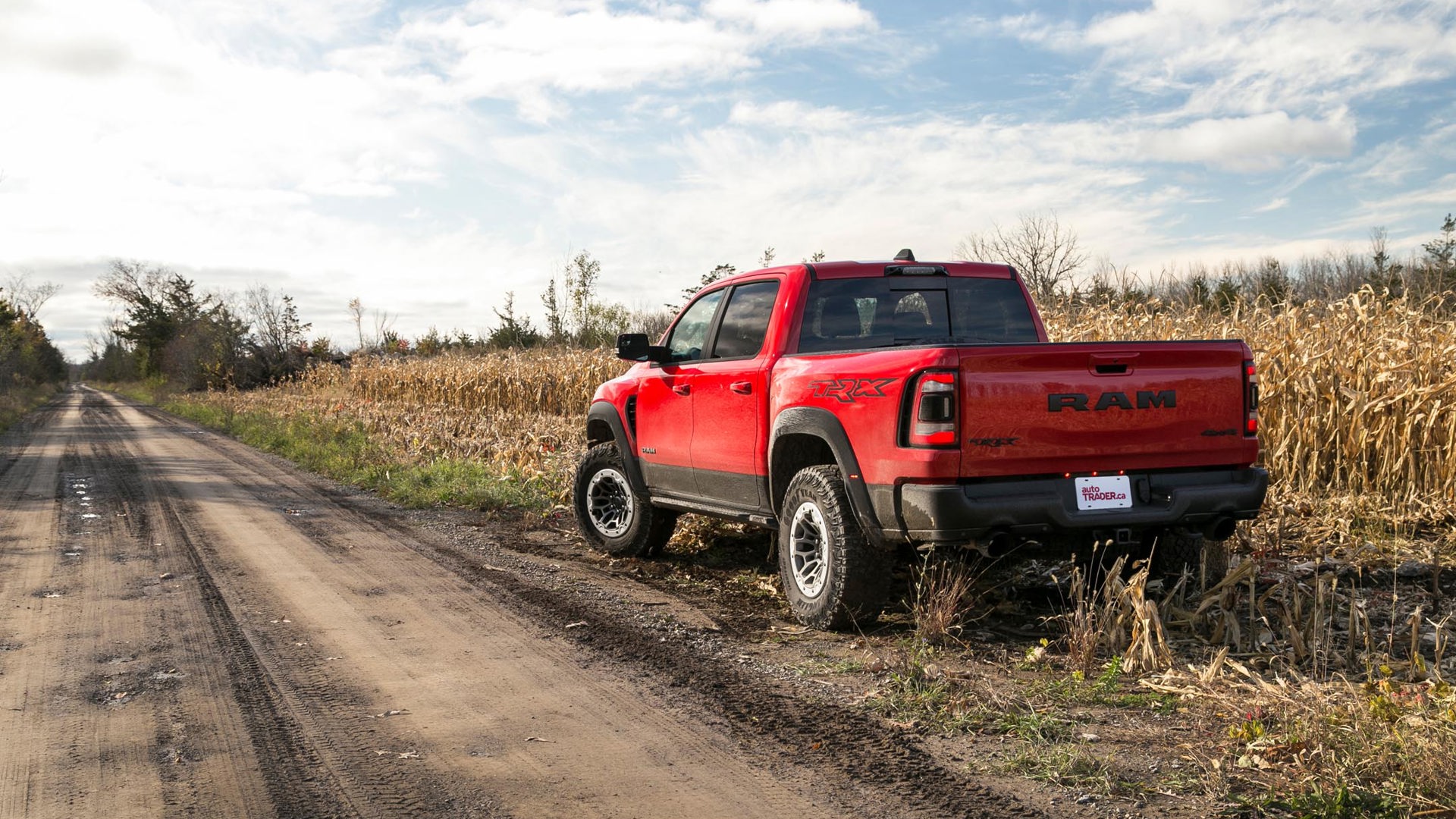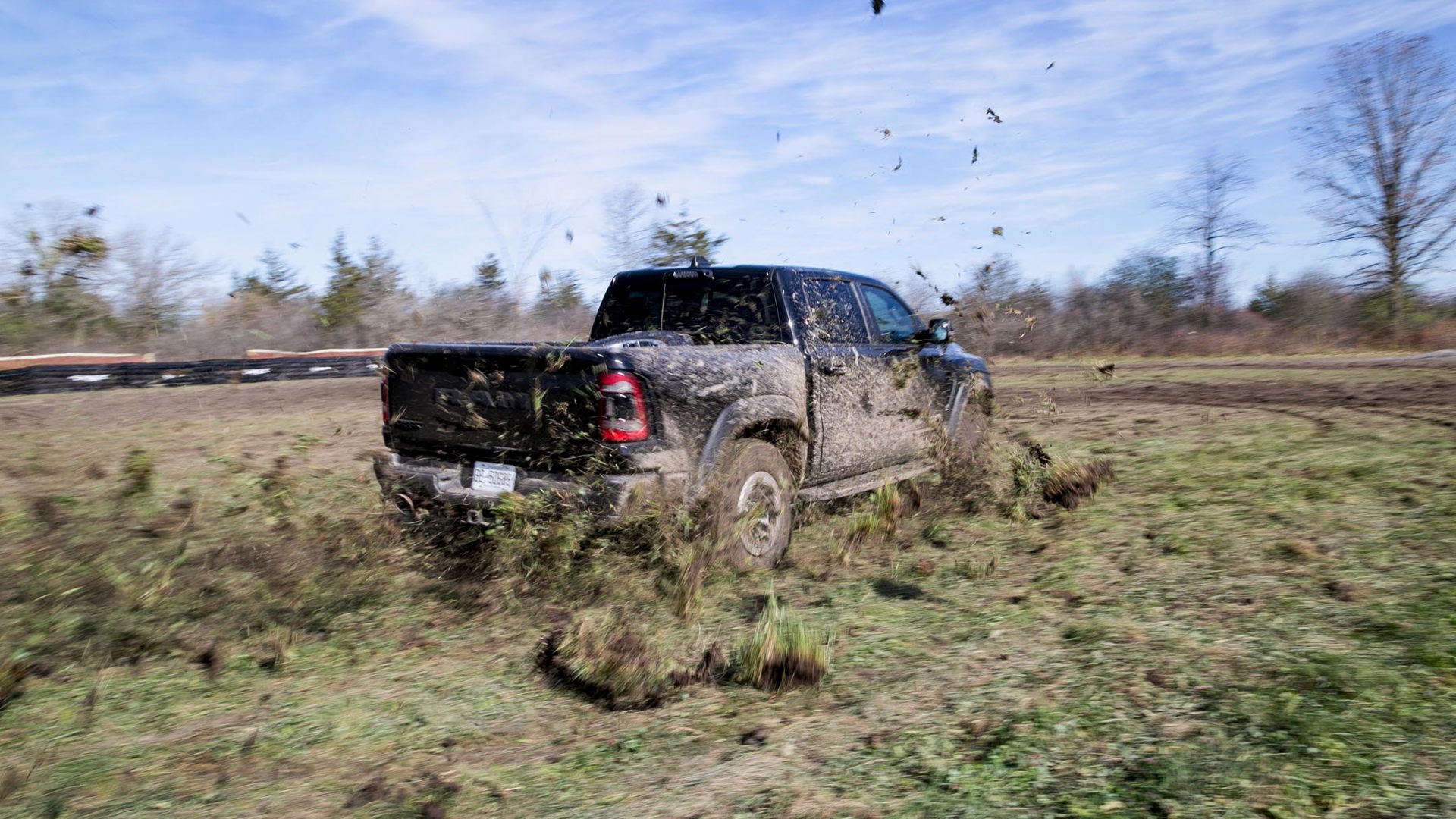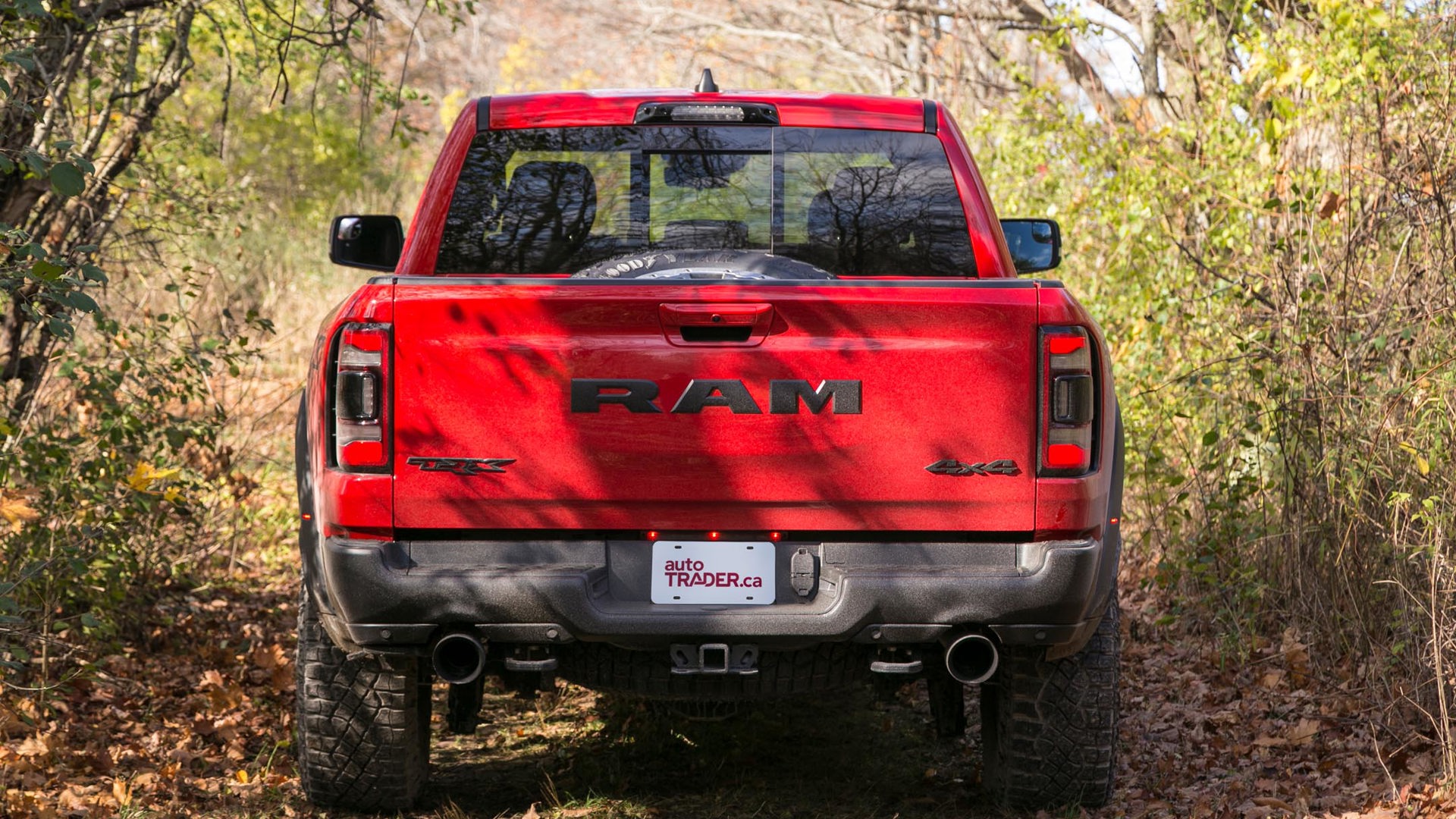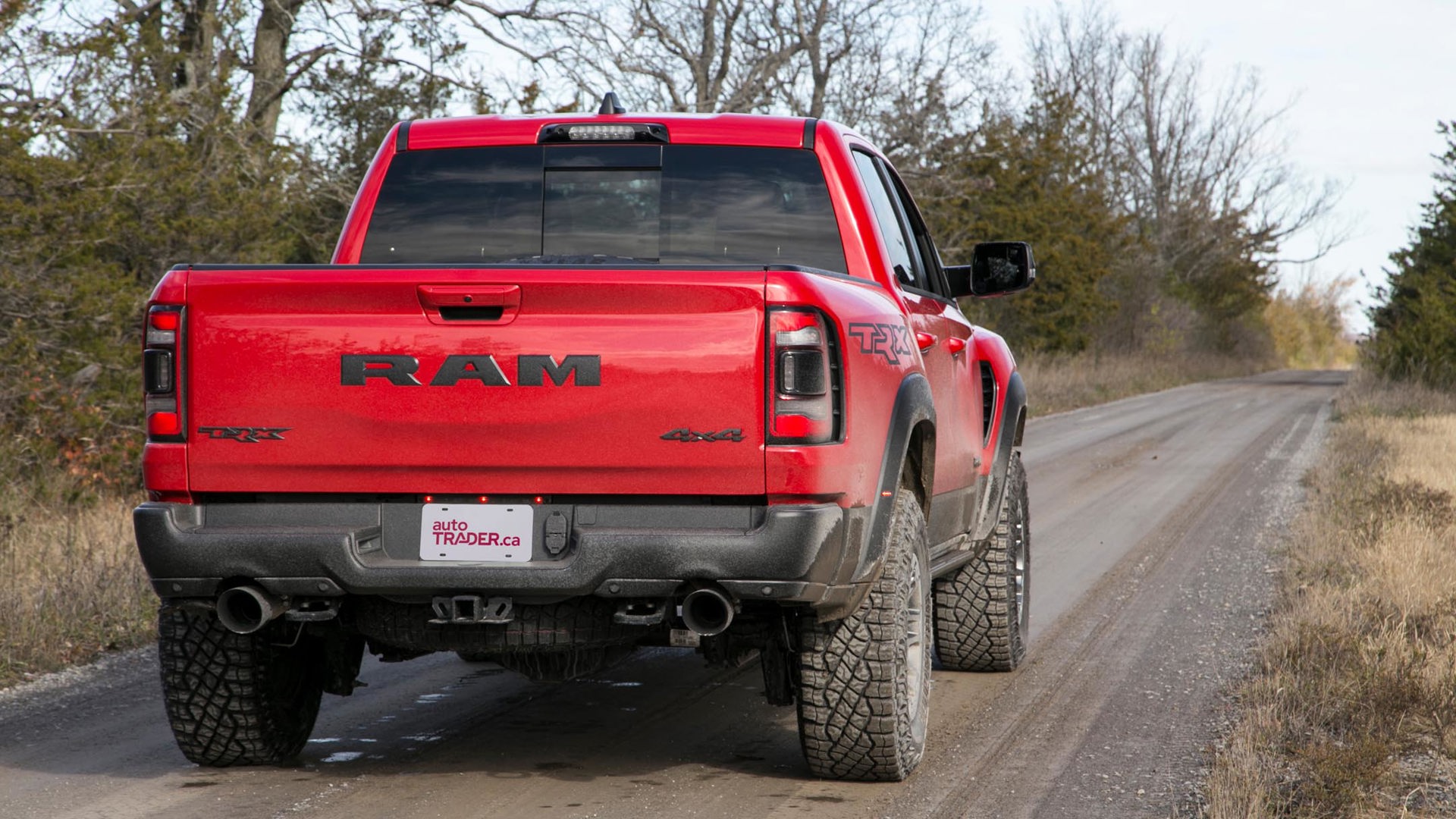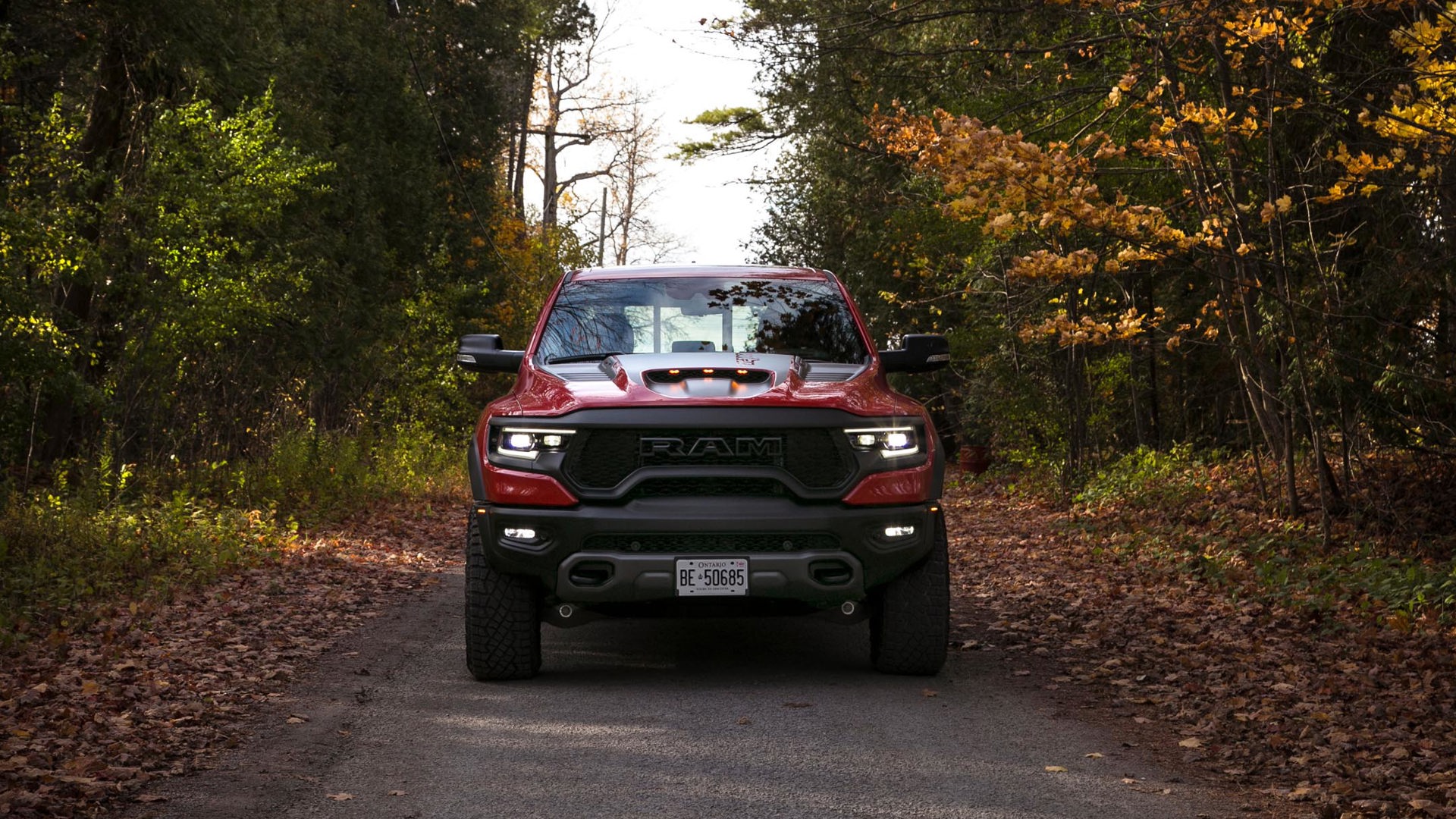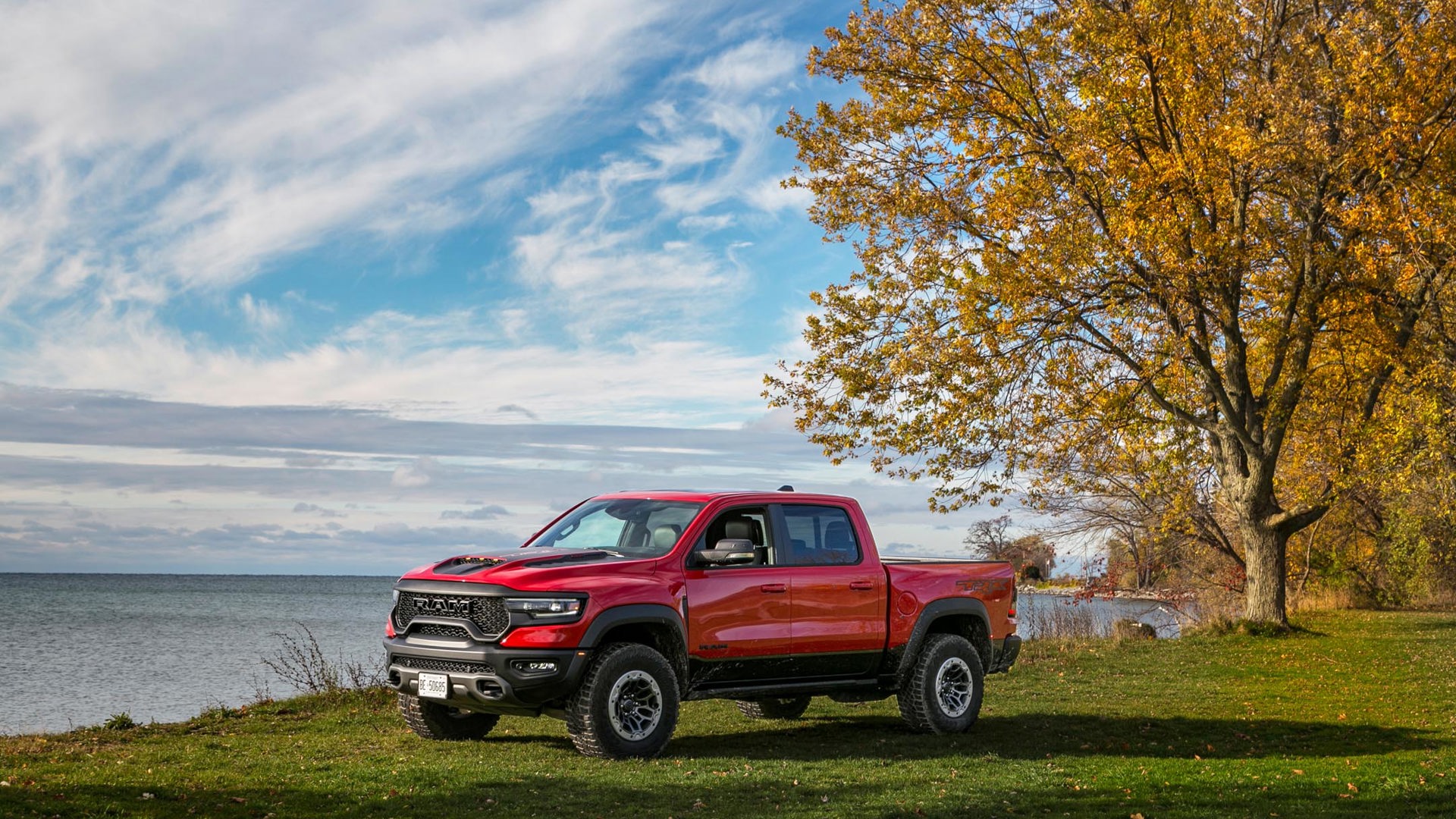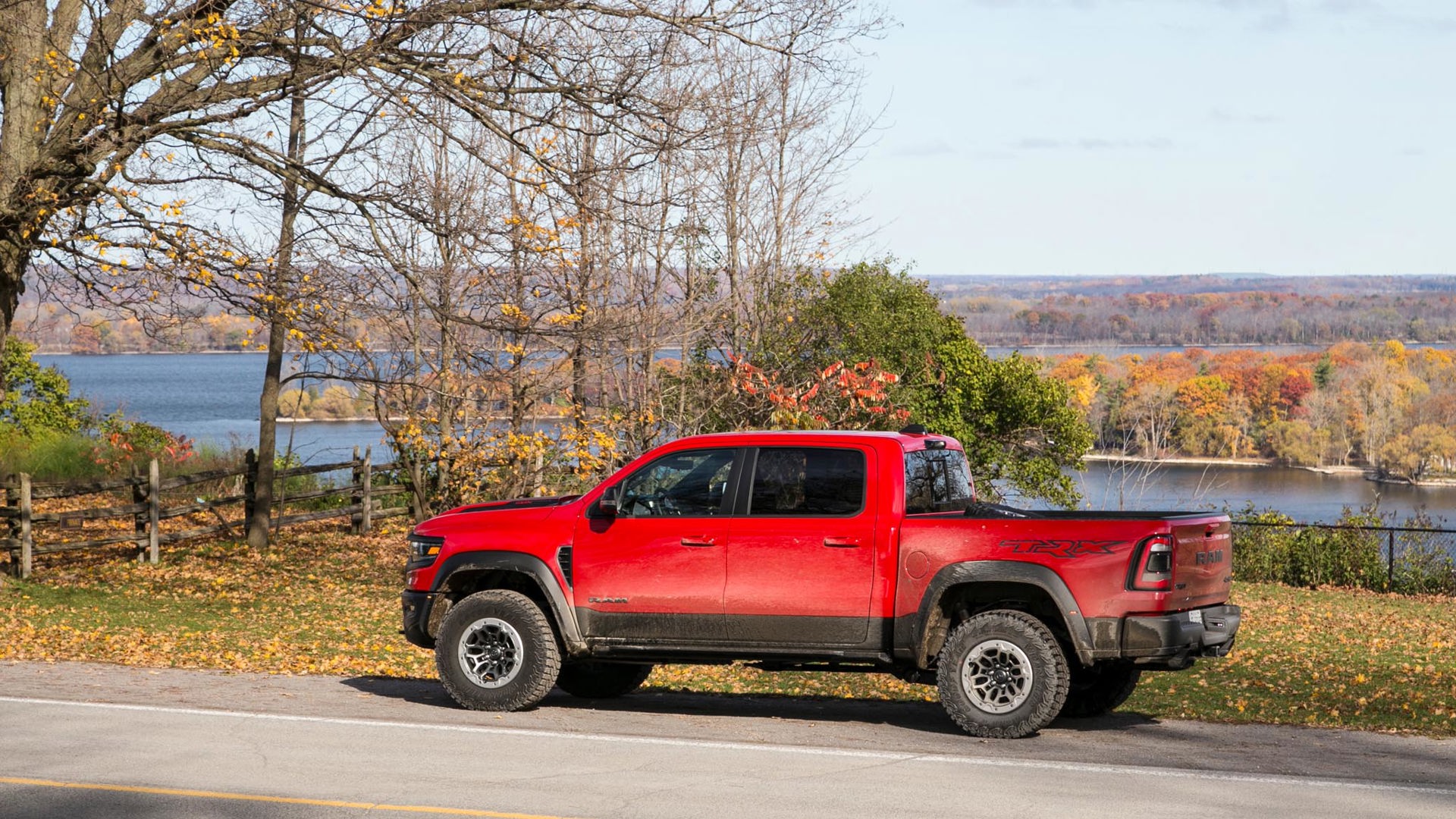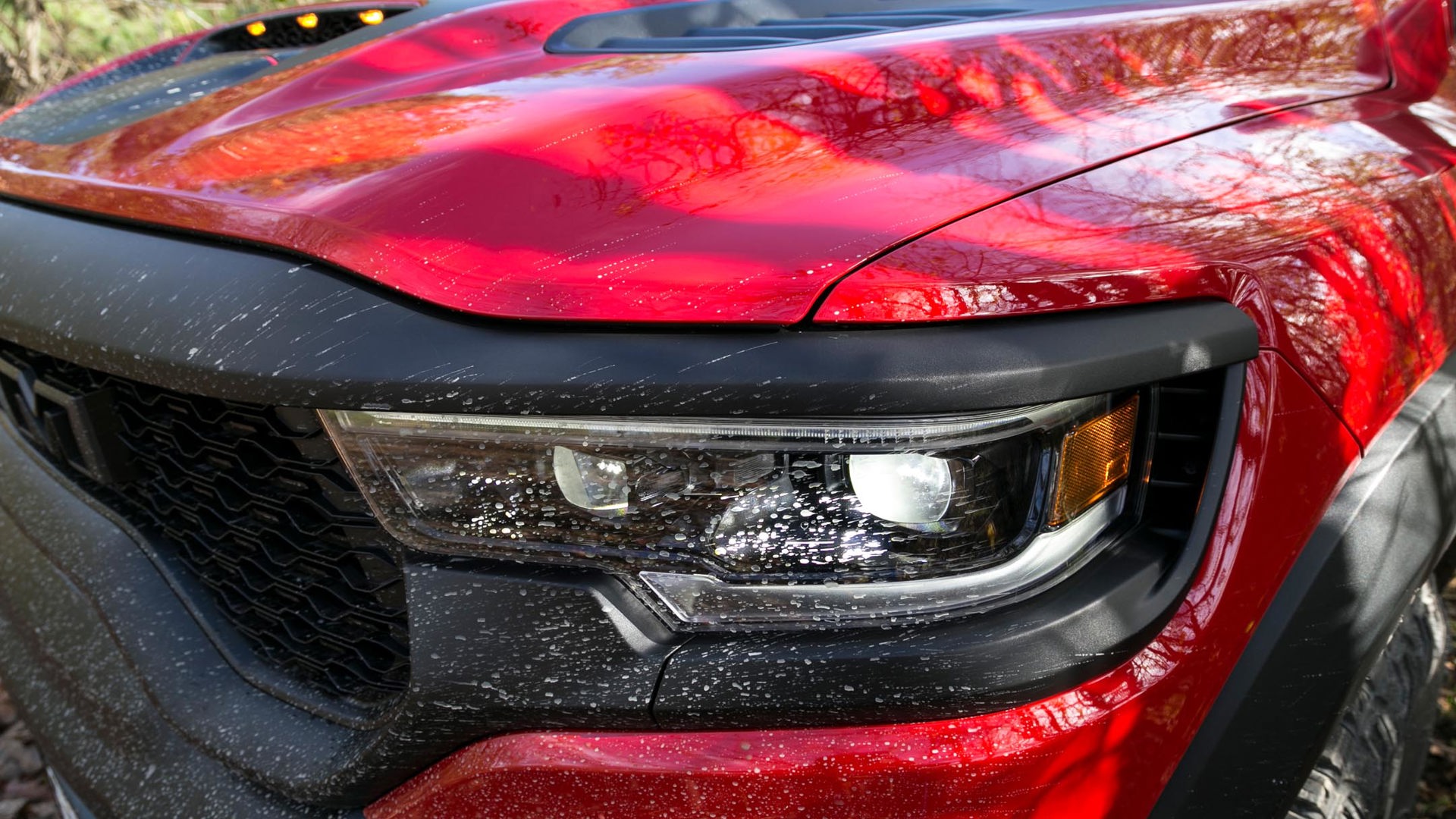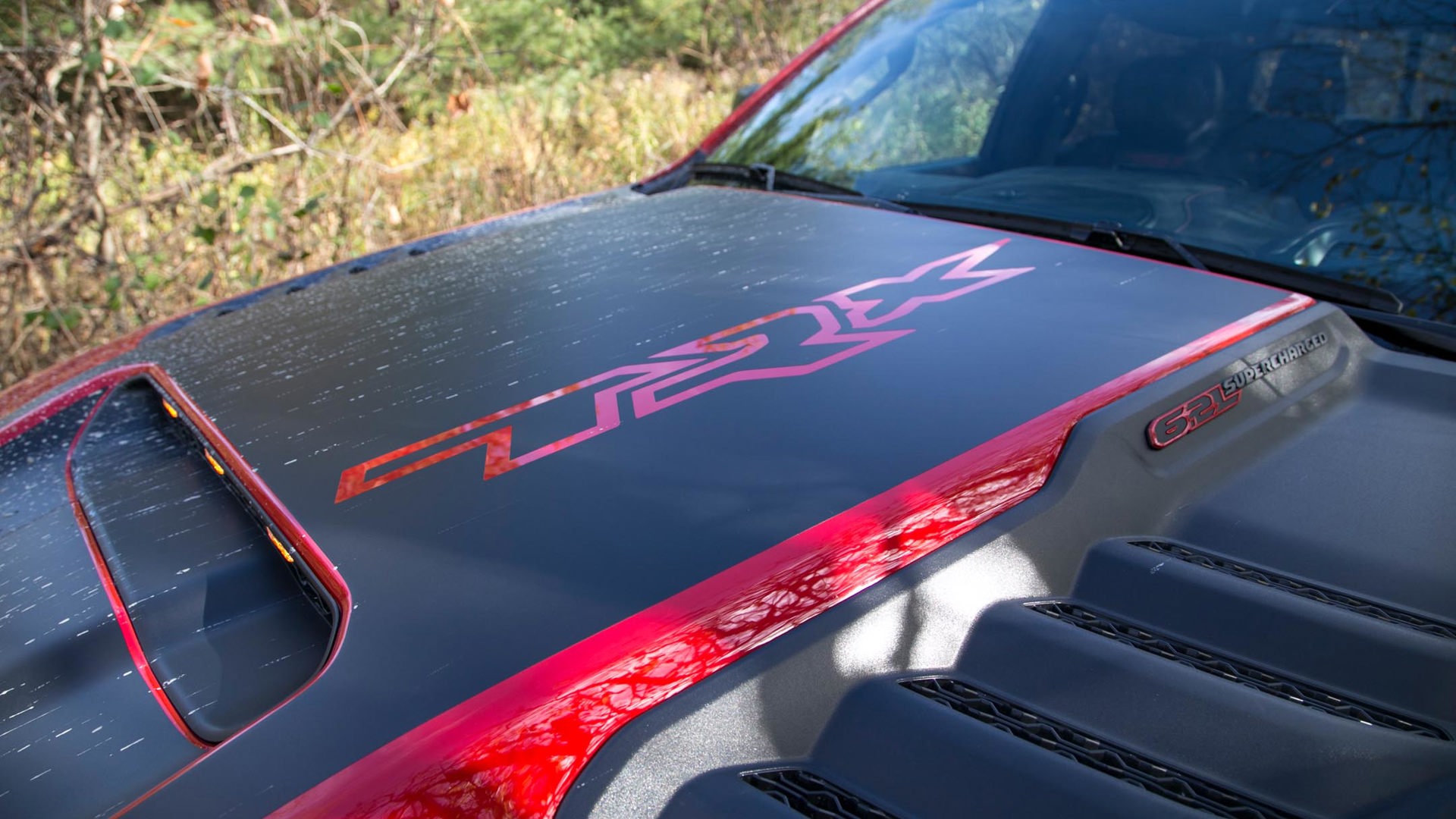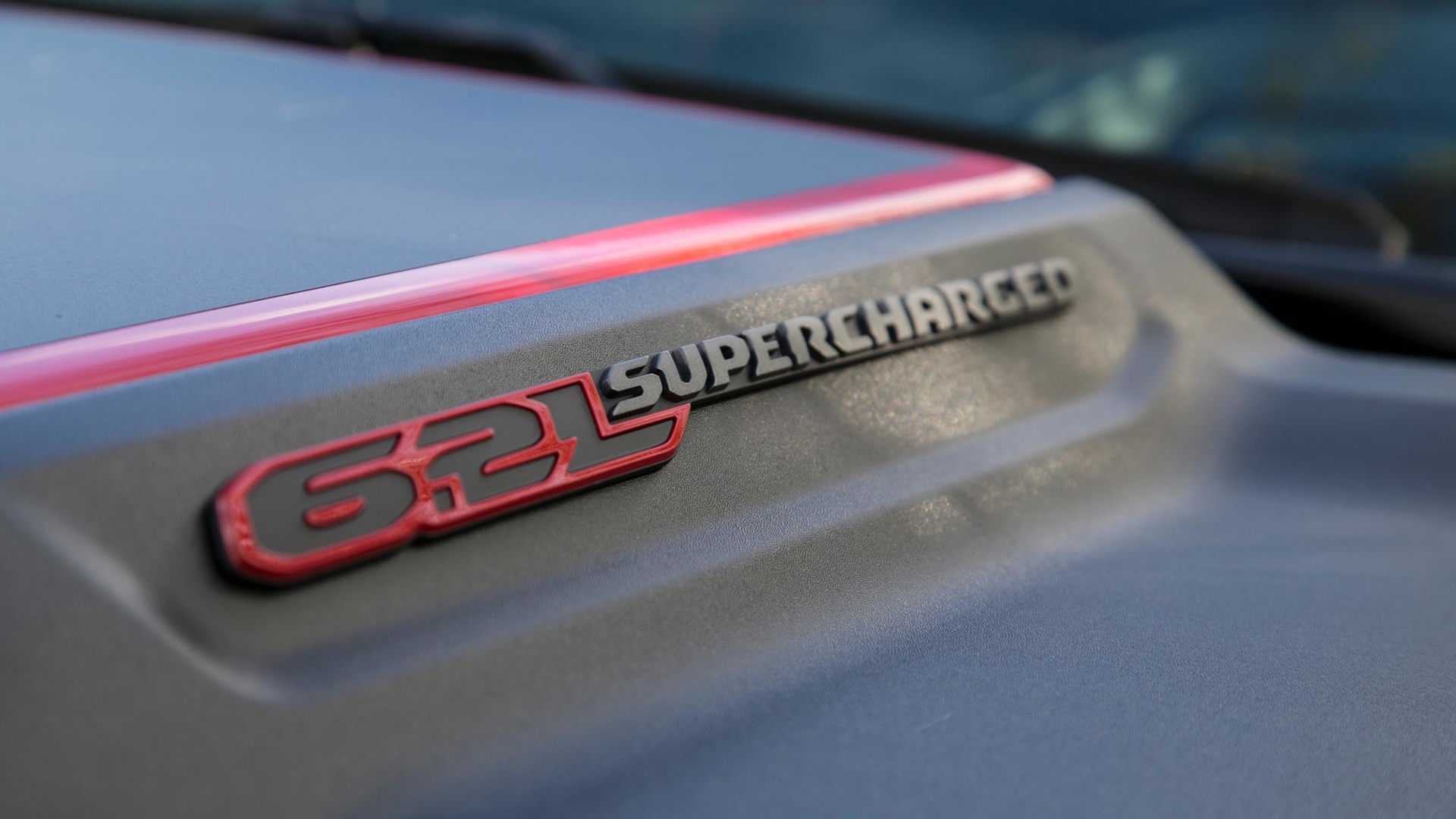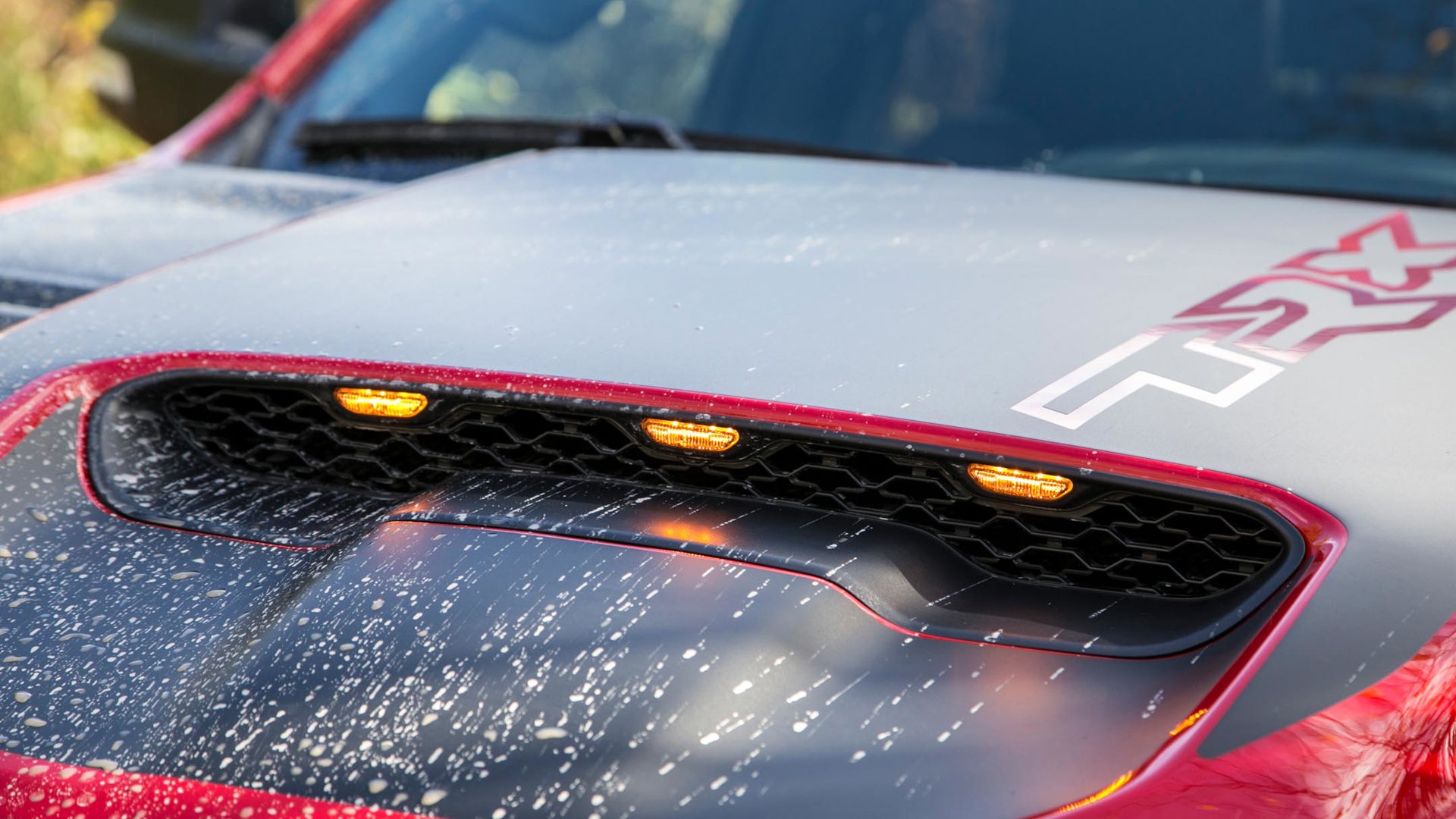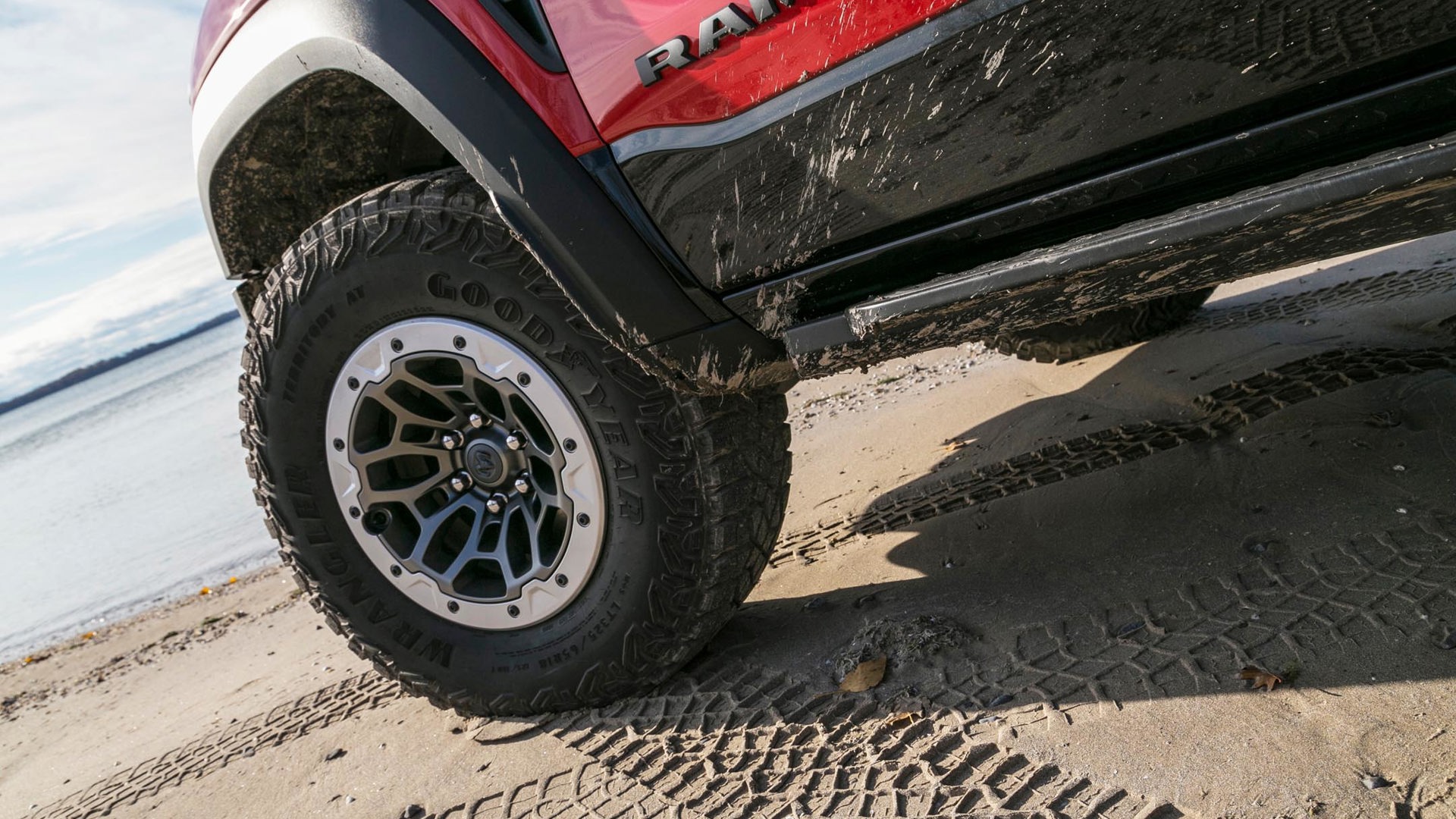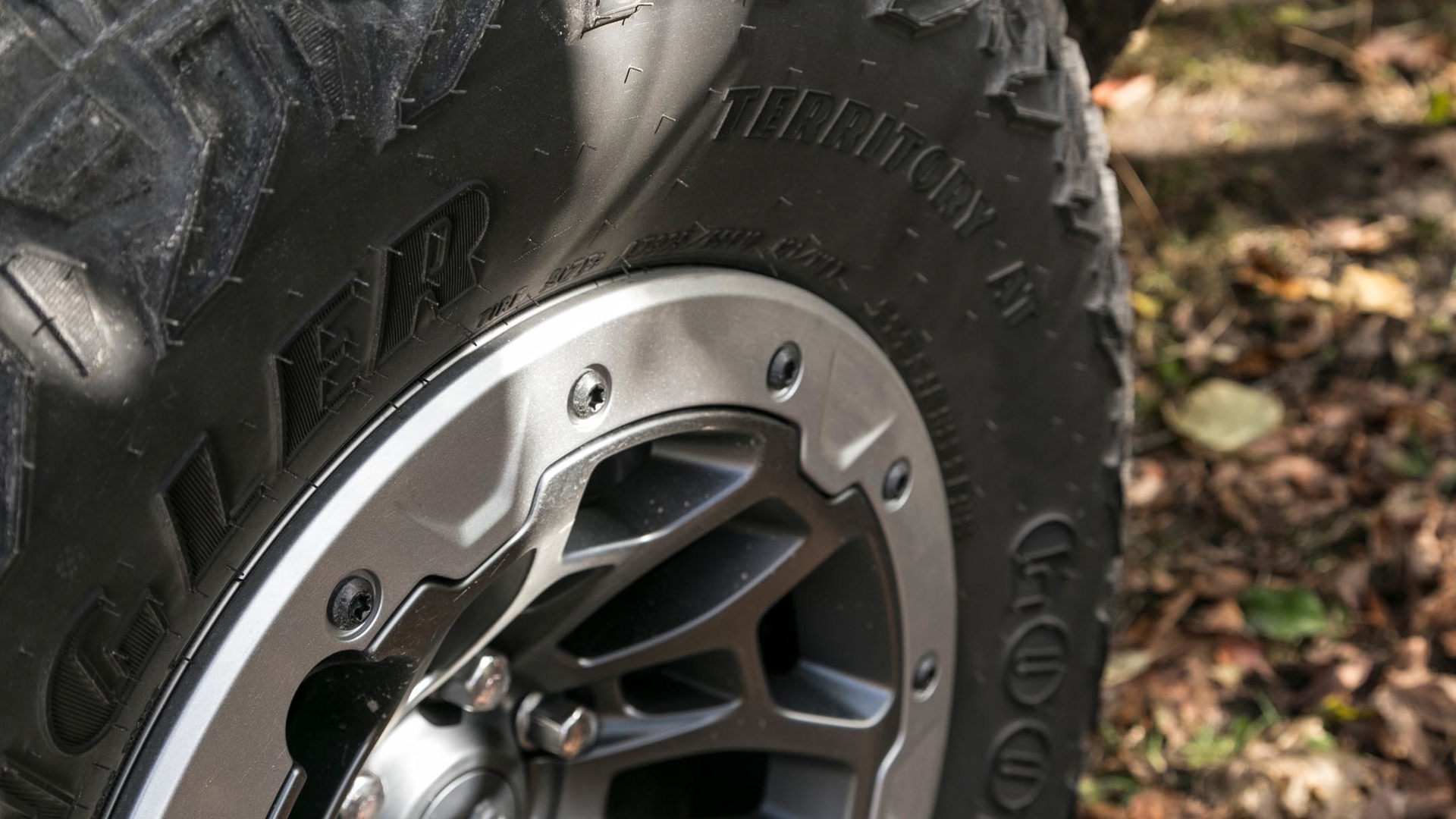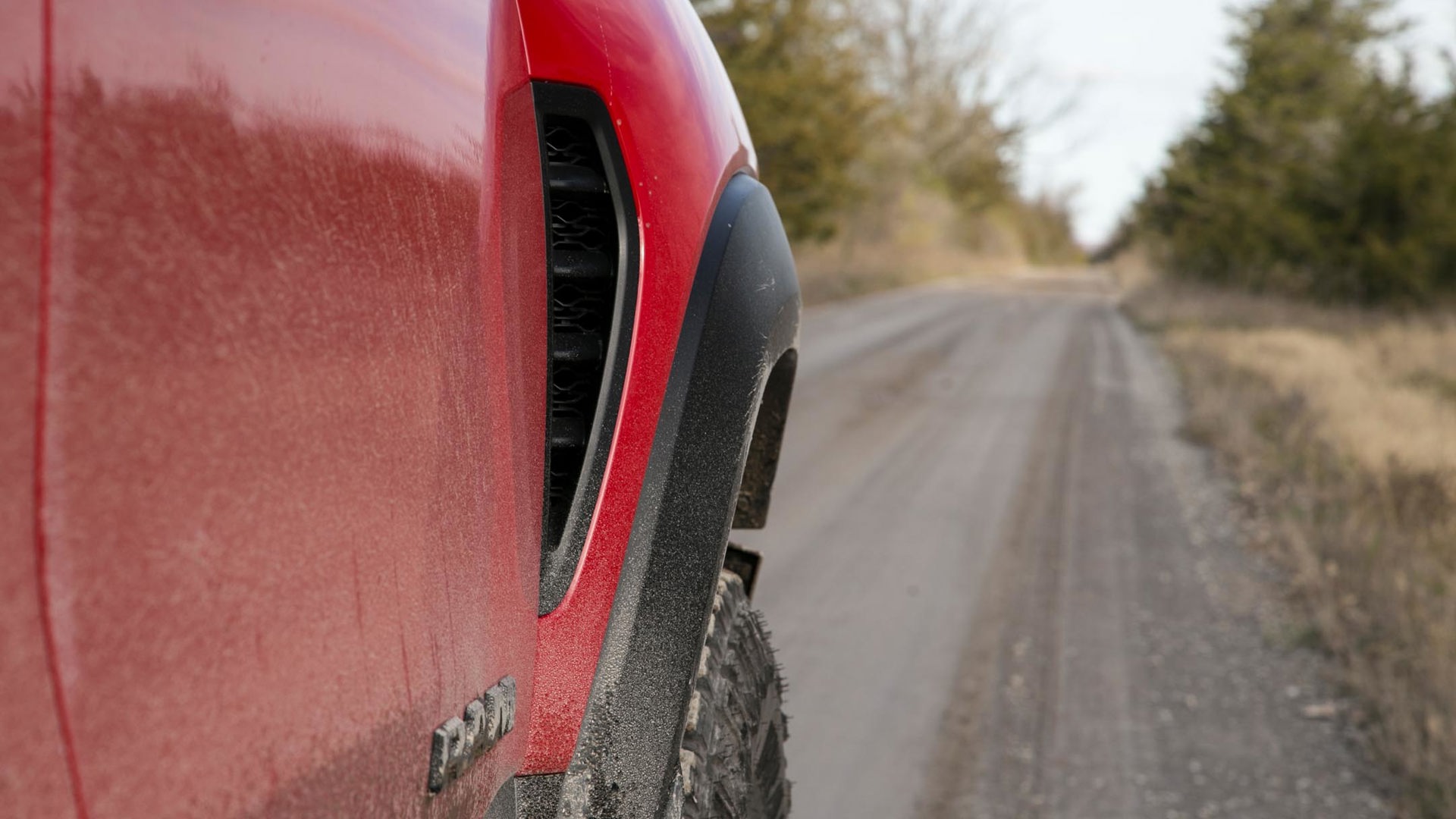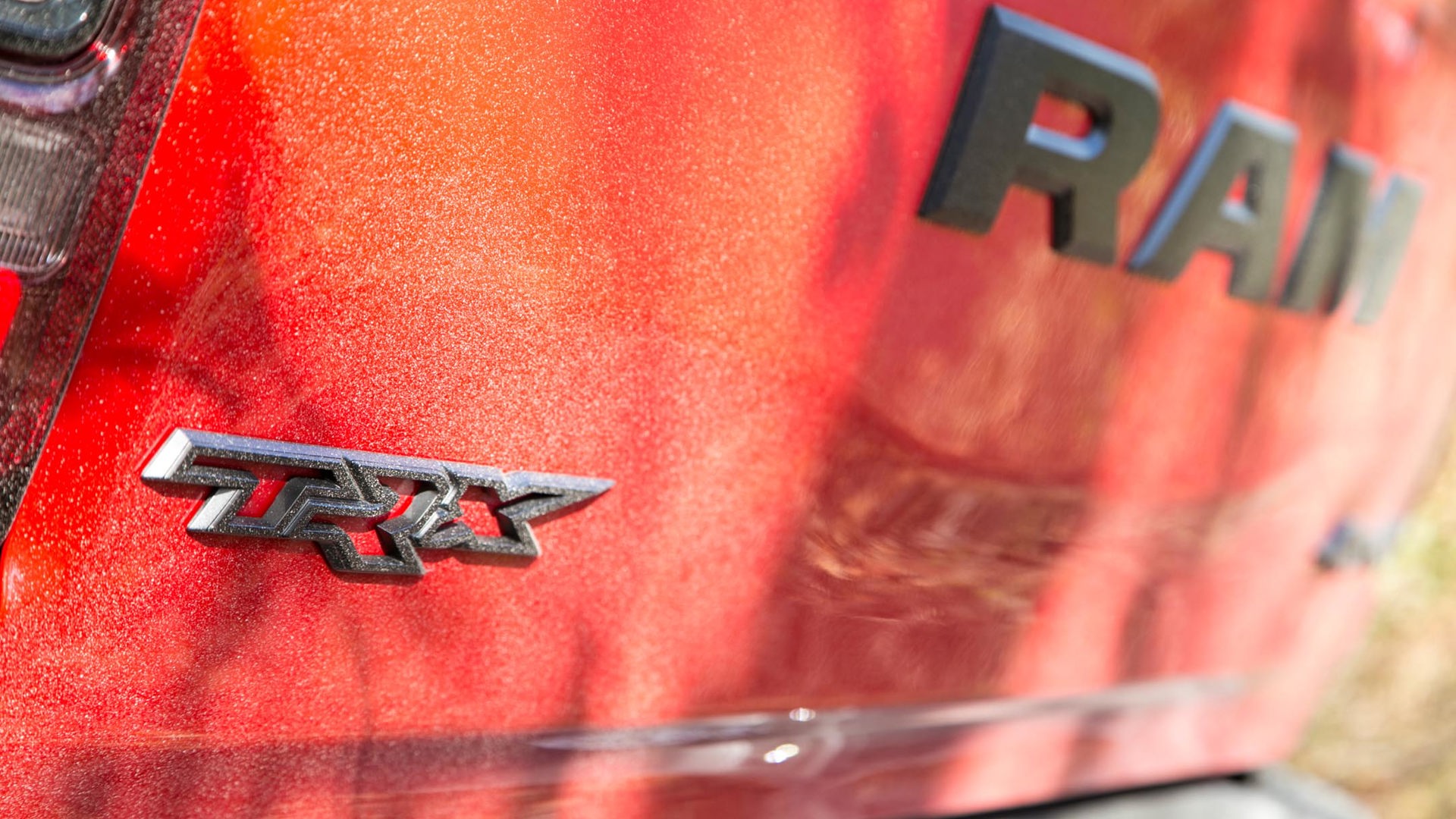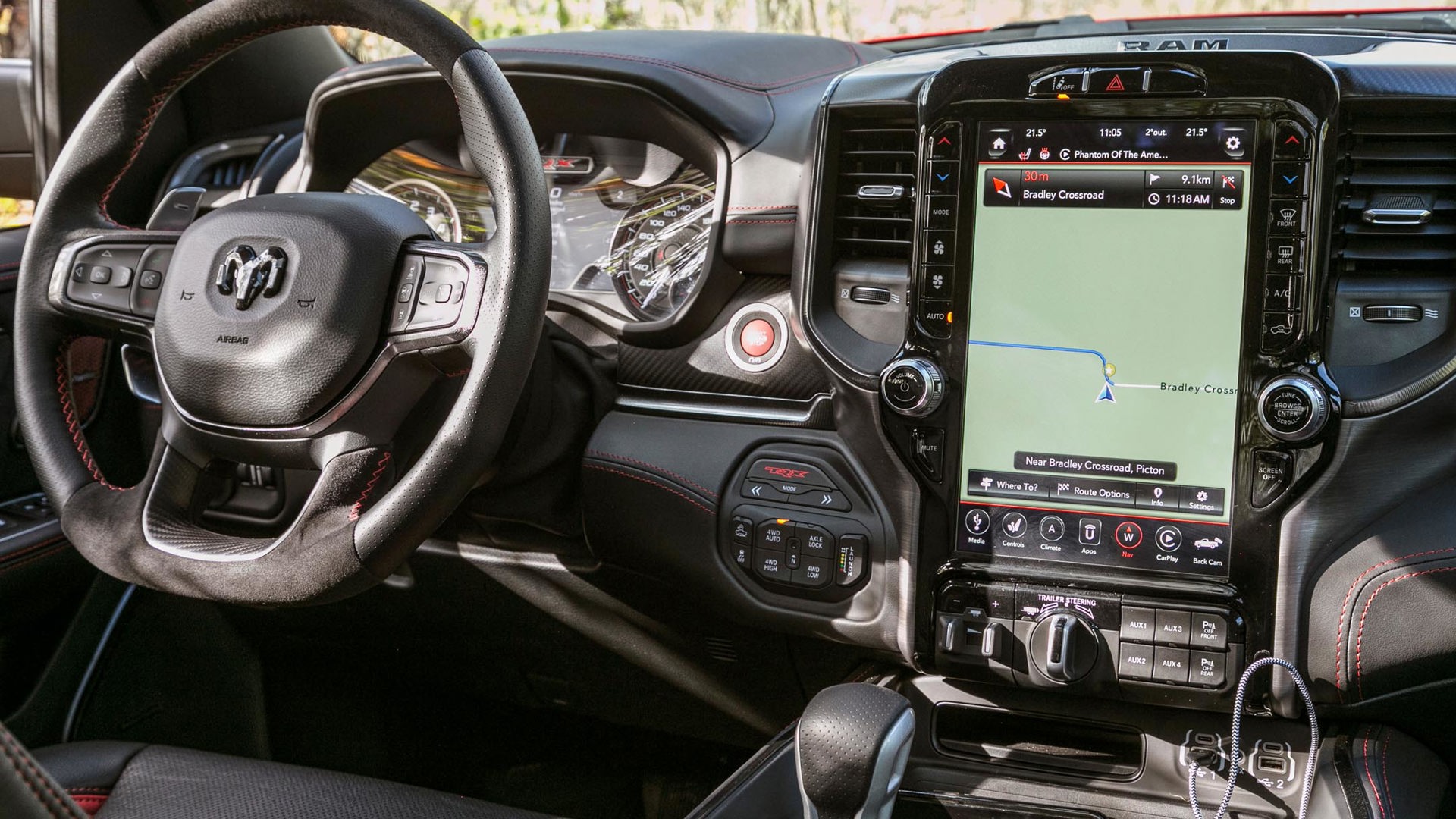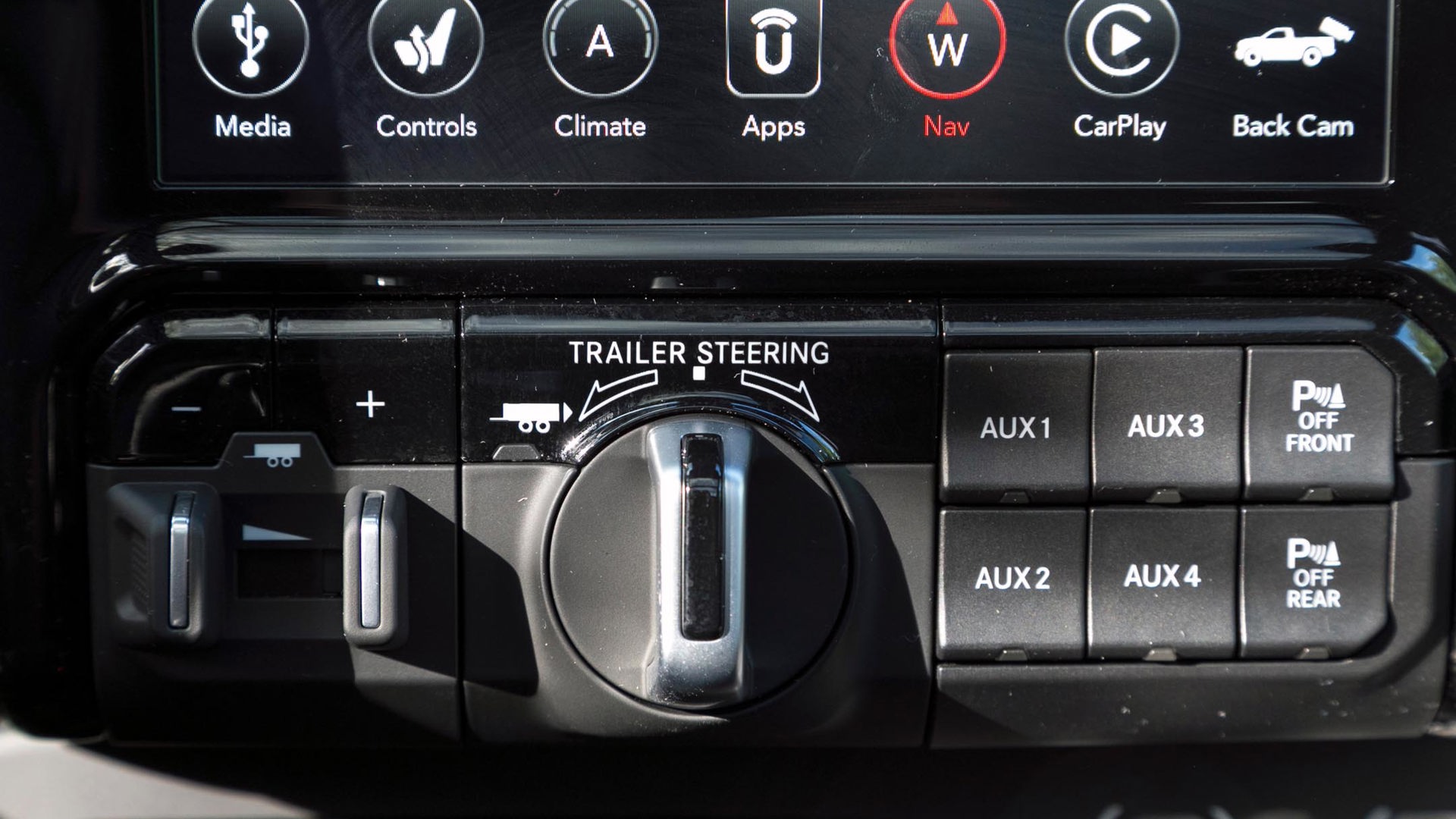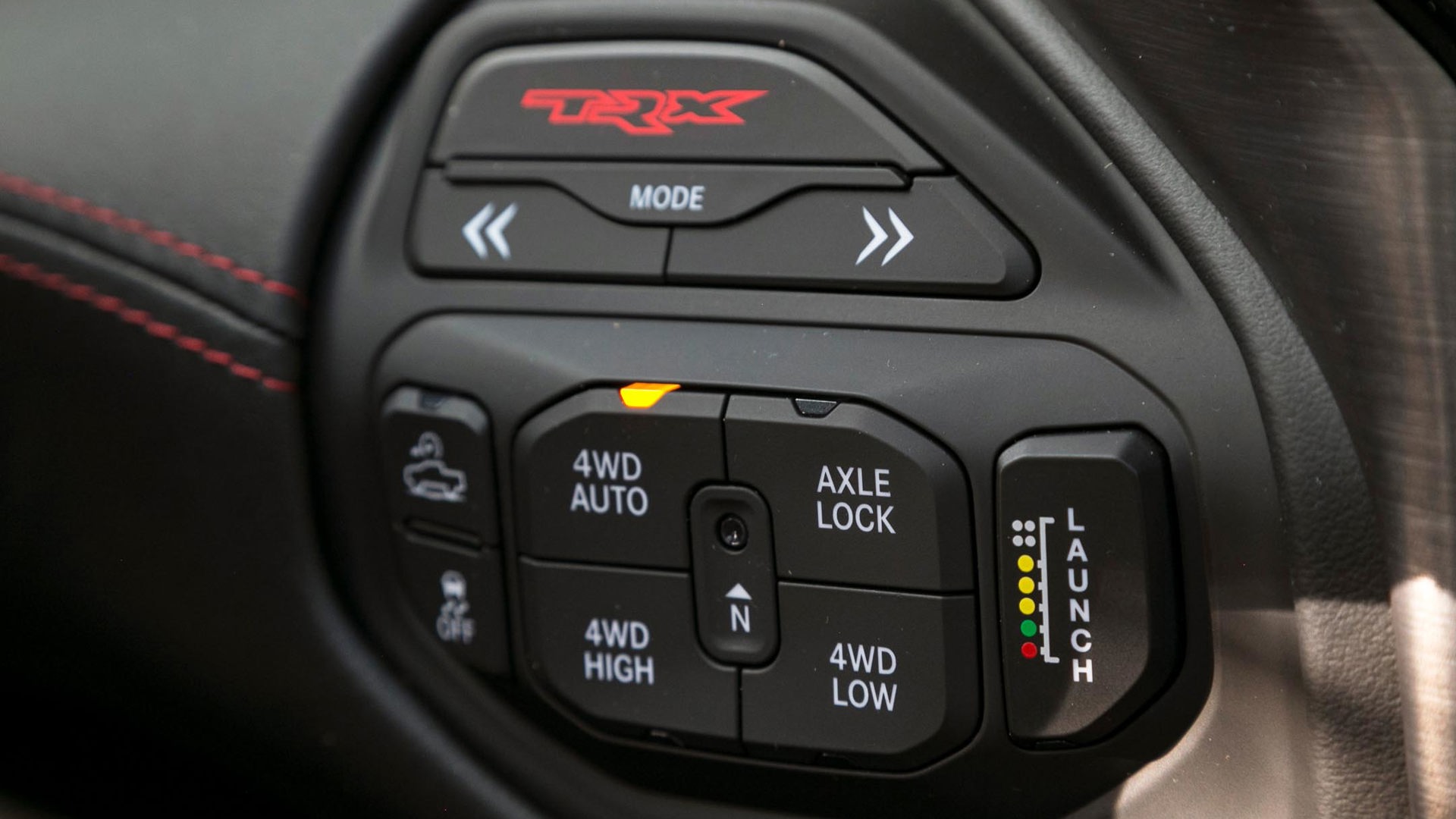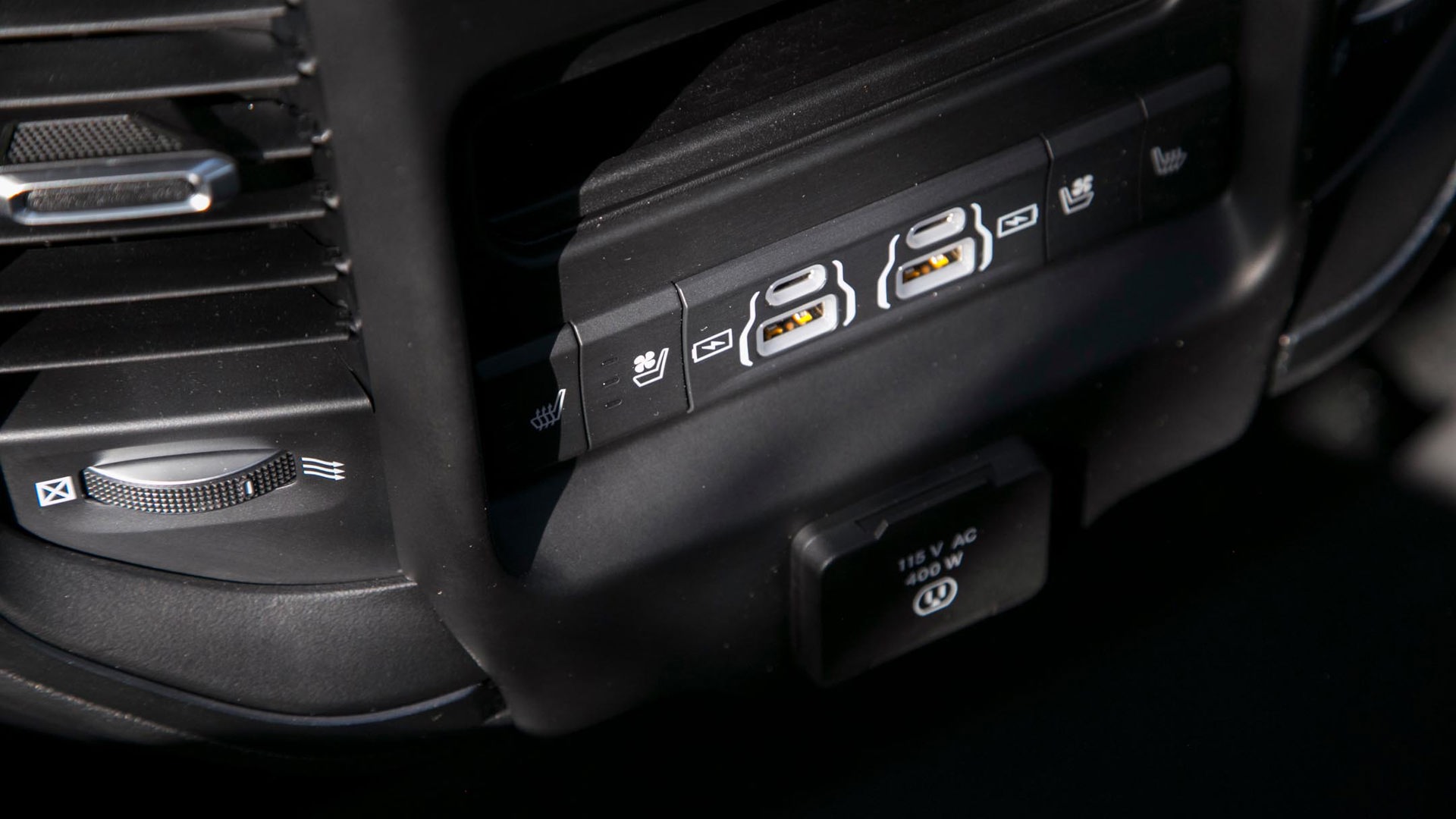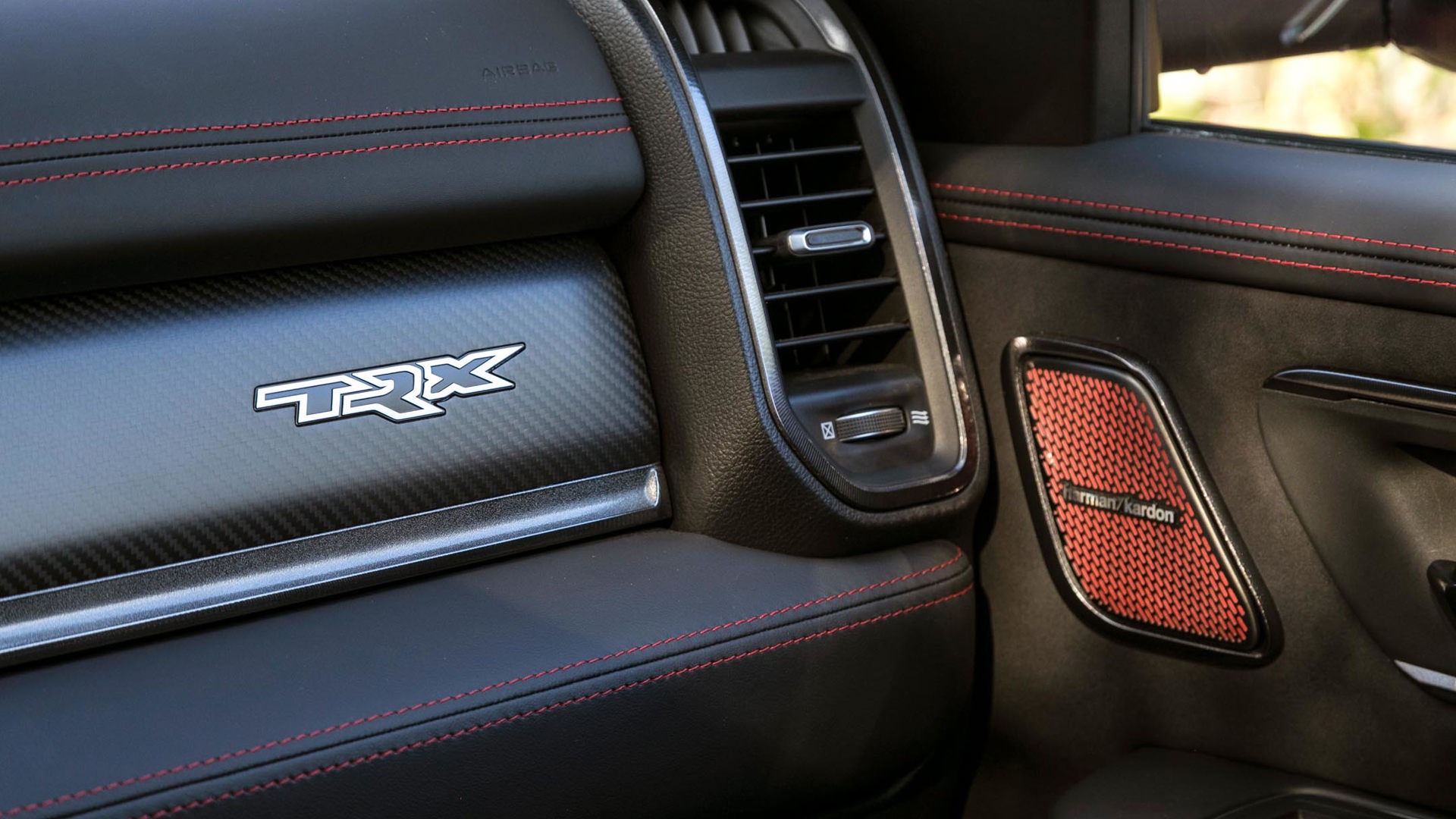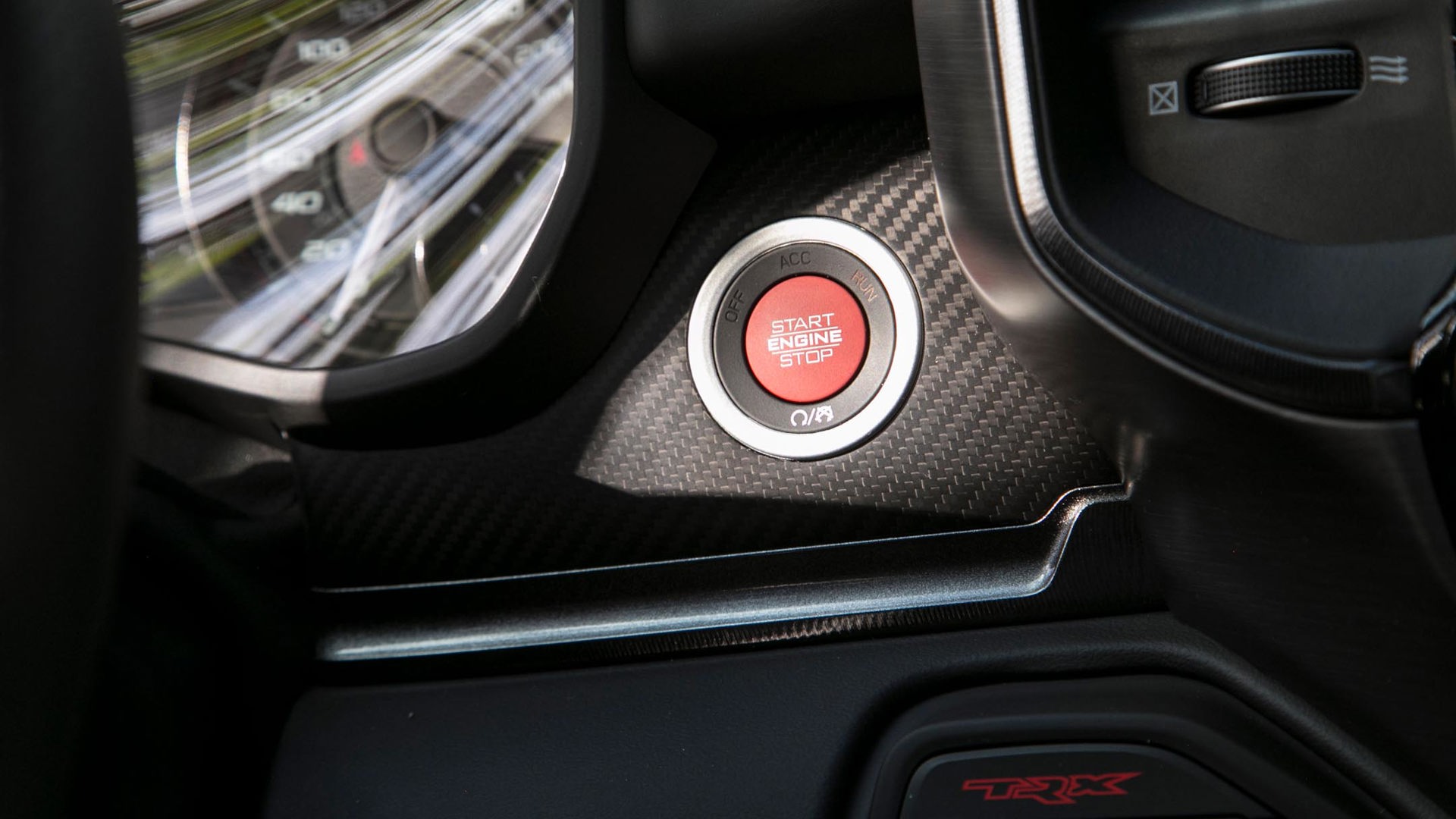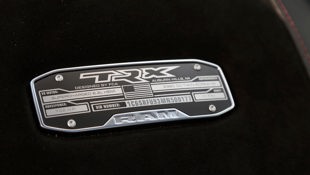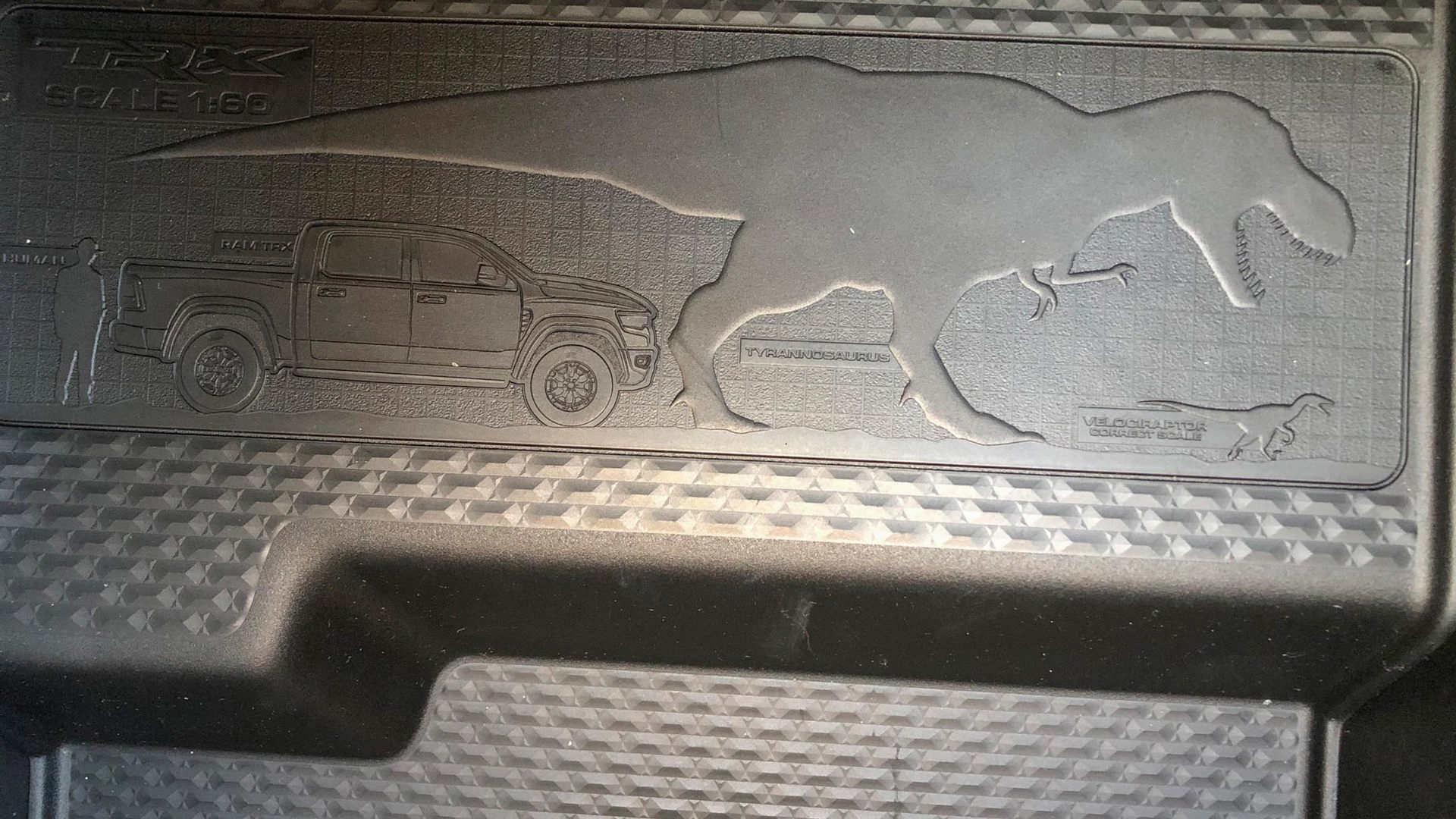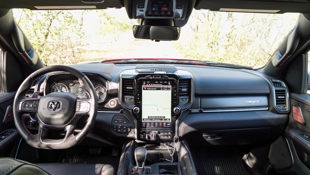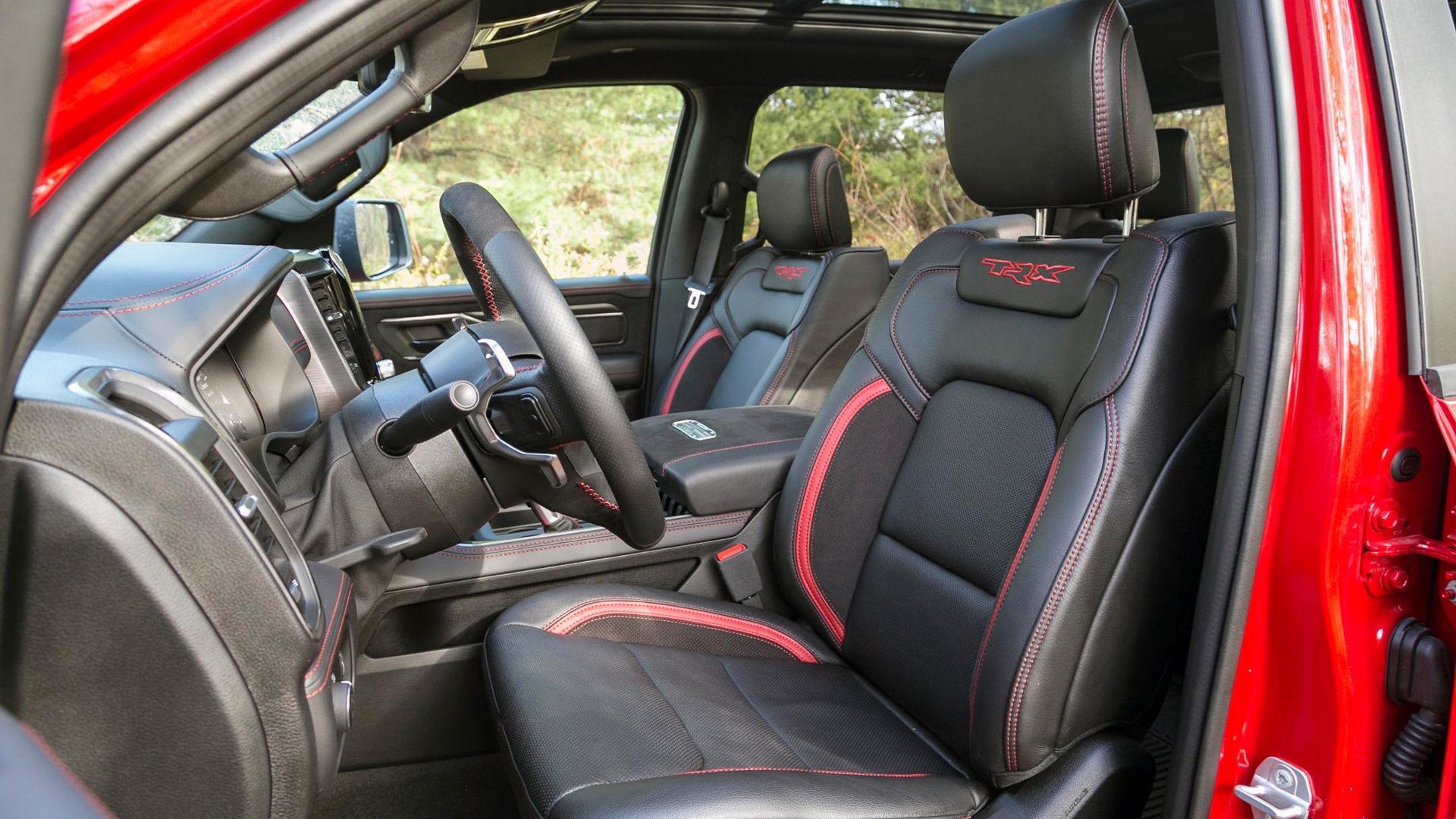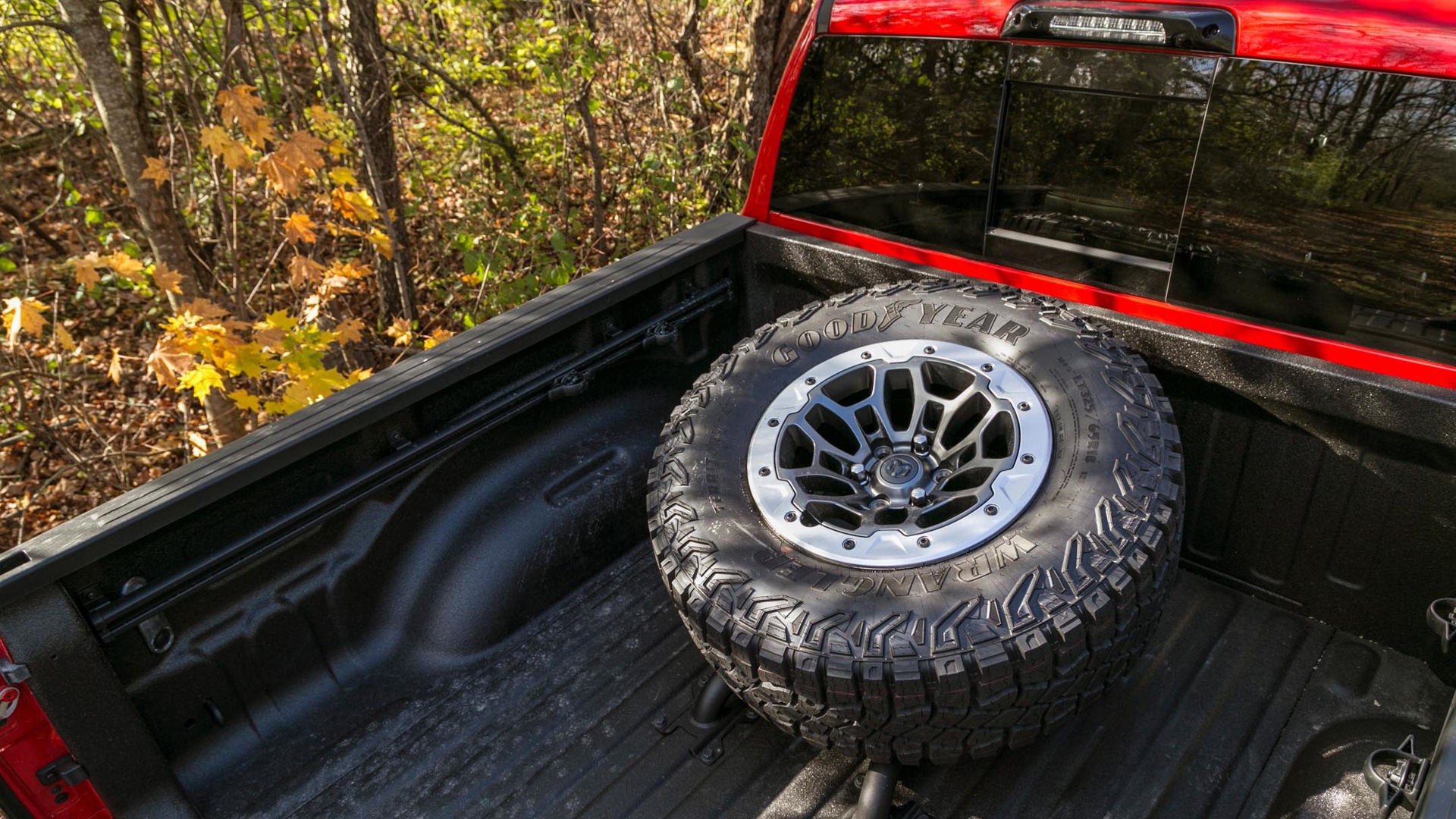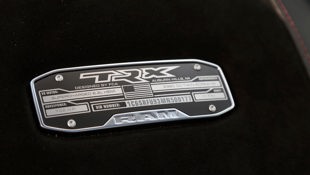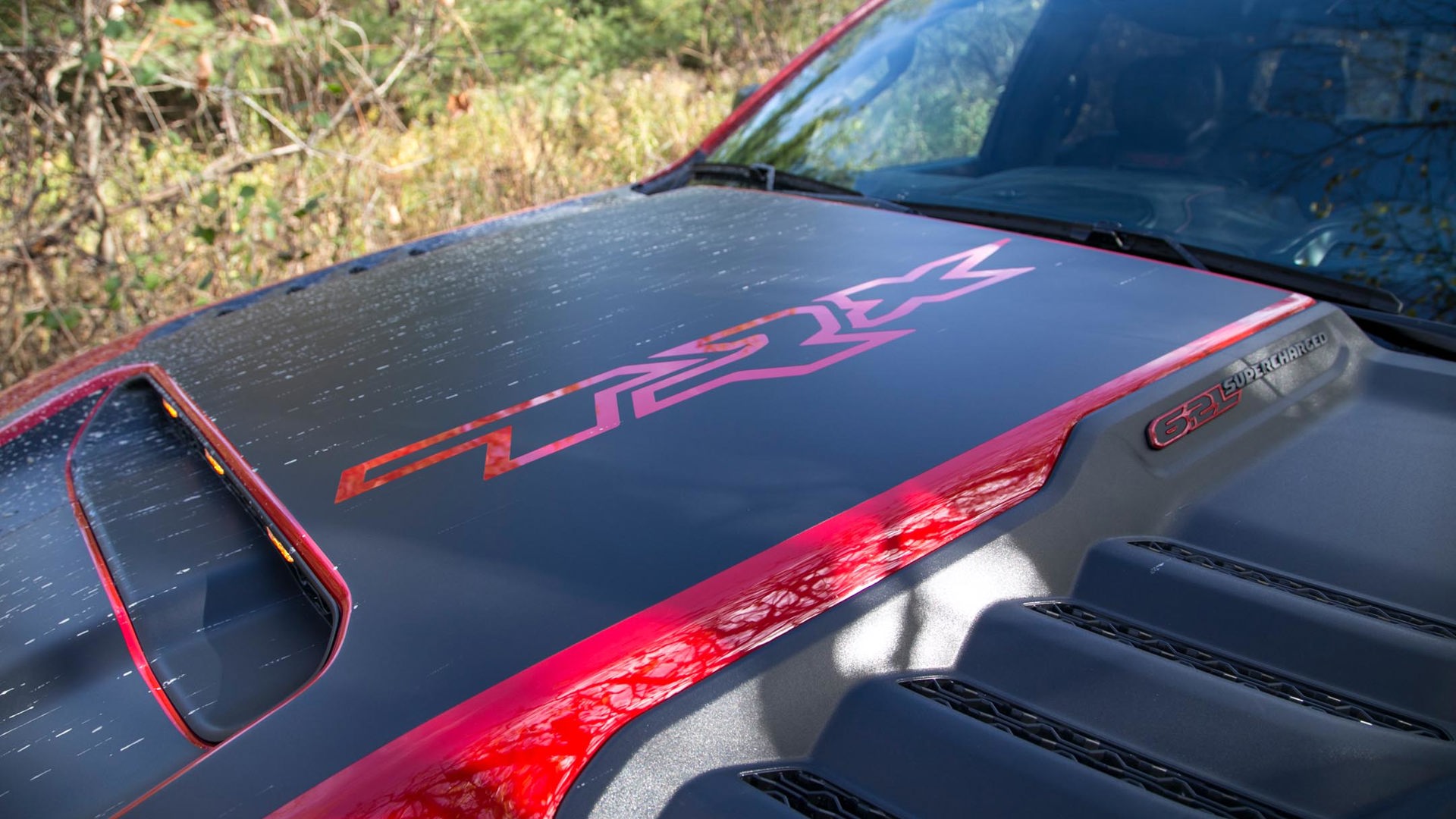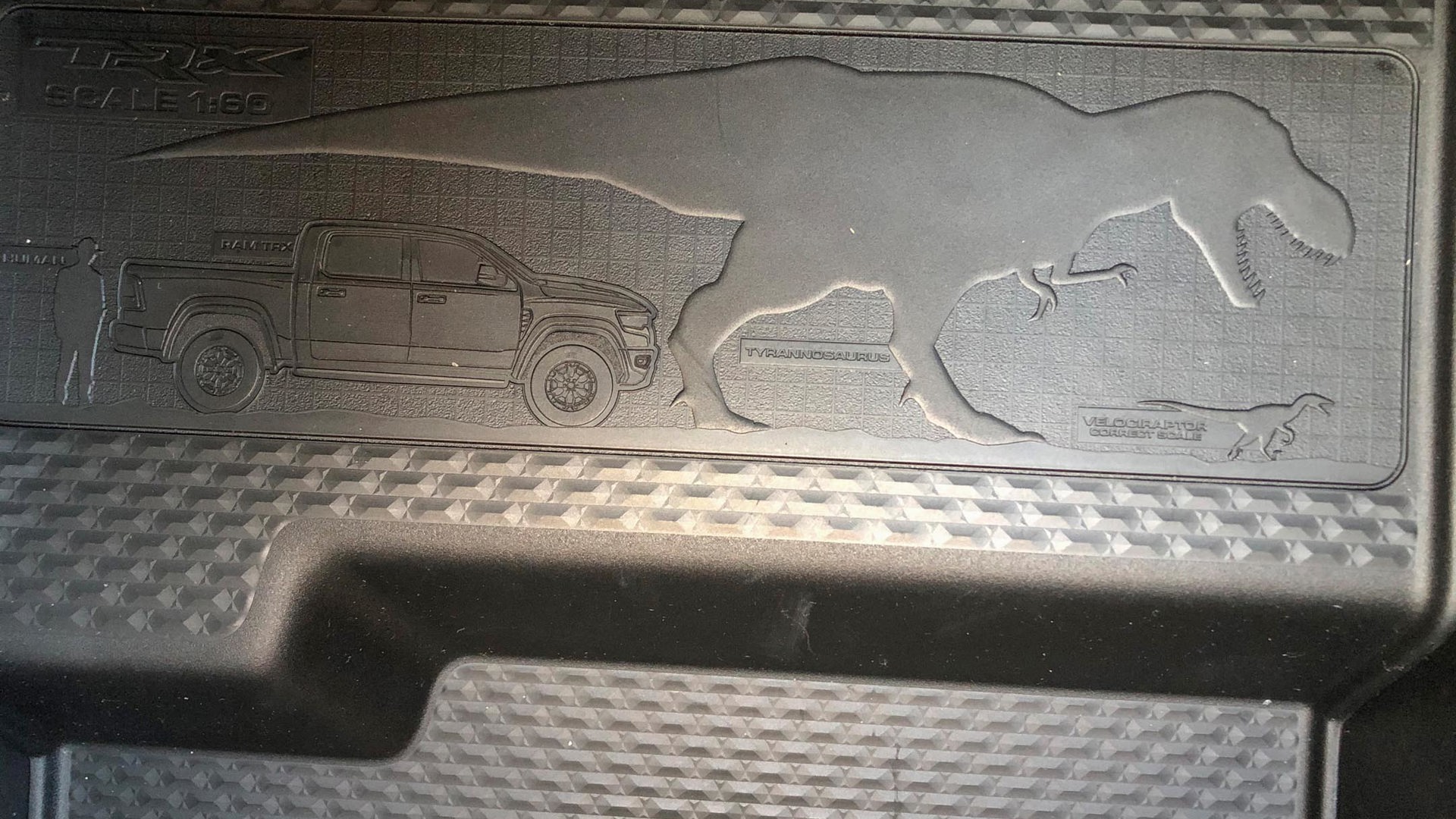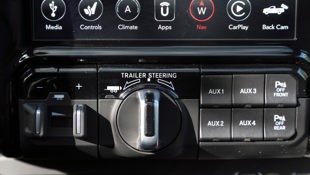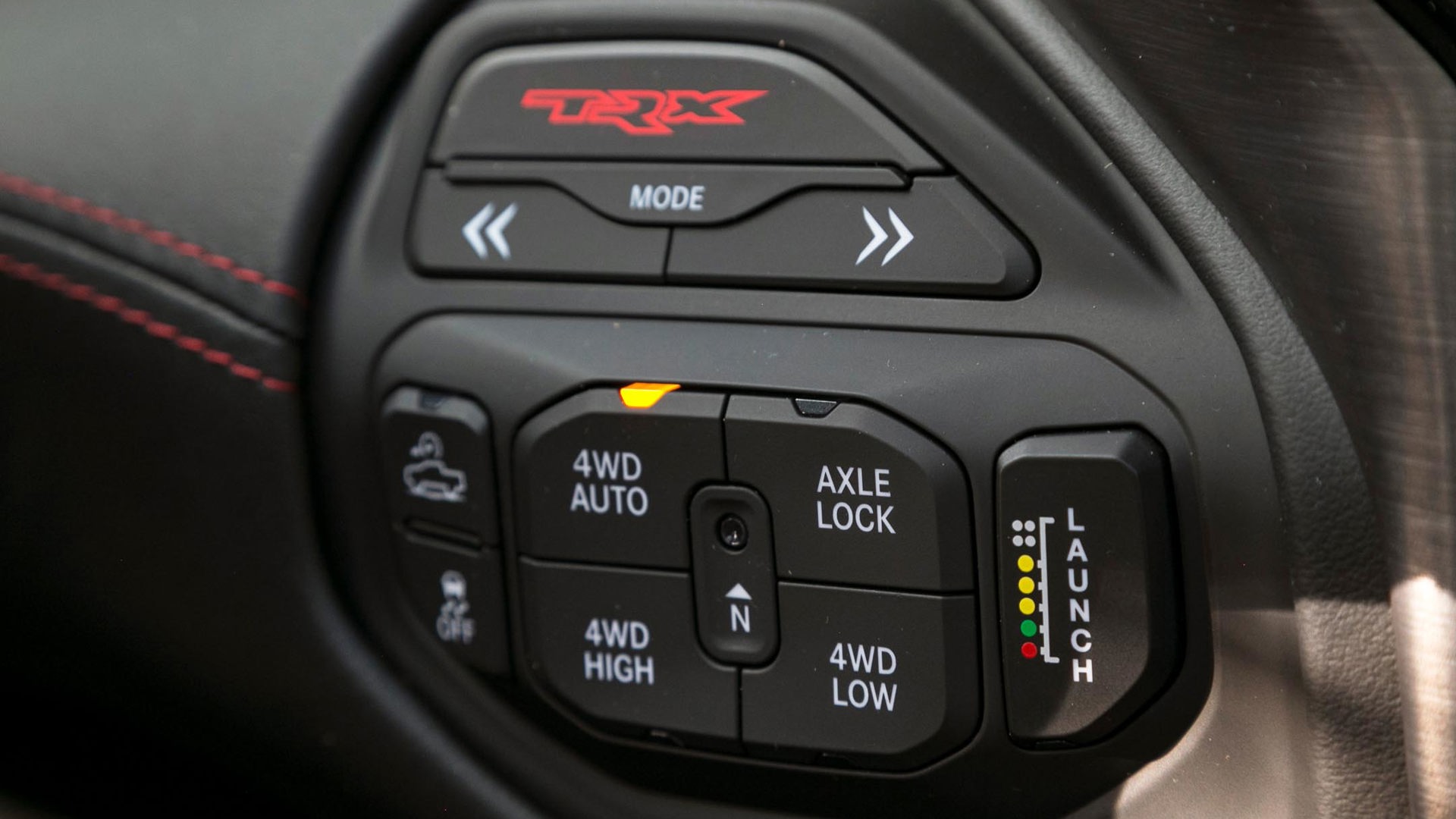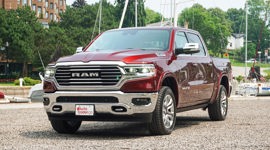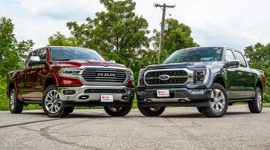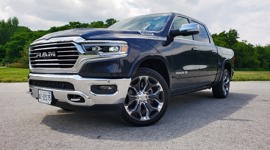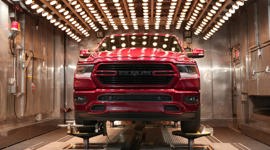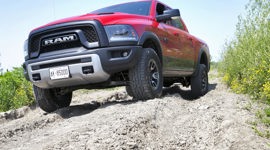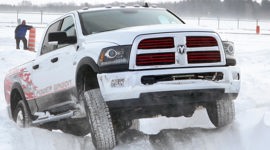Sometimes it seems the engineers at Fiat Chrysler Automobiles (FCA) are like unsupervised kids trying to get away with whatever they can.
“Hey look, we’ve got this stack of supercharged V8s here, let’s see what we can stuff ‘em in!”
Those 700-hp monsters started in the Challenger, followed by the Charger sedan, and eventually even found their way into the Jeep Grand Cherokee. And why the heck not?
Frankly, for enthusiasts, it’s worth encouraging the lunacy over in Auburn Hills, Mich., because they keep giving us new, socially irresponsible machines to get our pulses up. And now, they’ve finally put it into a Ram 1500 truck and called it the TRX. Yee-haw!
The fiscally minded folks at Ram will be quick to point out that pickup sales continue to do very well in North America, and expanding the model range makes sense. Here in Canada, Ram’s 1500 has overtaken General Motors (GM) and its twin trucks for second-place spot in the sales race.
None of that matters when discussing the TRX, though, because this truck’s purpose is simply to be the quickest, fastest, most powerful, and sensationally badass off-road, race-ready truck on the market.
And, it needs to be better than the Ford Raptor.
About that last point, let’s cut right to the chase: at 702 hp, the TRX has a 252-hp advantage, and its 650 lb-ft of torque give it a 140 lb-ft surplus over that Ford. But at its lightest, the Ram 1500 TRX weighs in at a morbidly obese 2,880 kg (6,350 lb) compared to the 2,584-kg (5,697-lb) Raptor, so some of that power advantage is offset there.
Nevertheless, the TRX will hit 96 km/h in a claimed 4.5 seconds compared to 5.8 seconds for the Ford. Where the rotary-dial gear selector is on other Ram trucks, the TRX has a collection of buttons, including one labelled “Launch.” While that's not something one usually finds in a pickup truck, the launch control system here works astonishingly well, rocketing the beast forward with truly awesome ferocity and enough aural fury to send lesser trucks cowering in the corner.
Those full-on launches – and indeed, even moderate acceleration – are aided by the fact that the TRX features full-time four-wheel drive, with output dispensed through a very heavy-duty eight-speed automatic transmission. There’s no two-wheel drive button to select, which makes a lot of sense when trying to put down that much power under an empty pick-up box. [Lesson learned after the Viper V10-powered Ram SRT-10, perhaps.–Ed.]
On the highway, the TRX doesn’t feel much different than most other Ram trucks. It’s a bit taller and the ride a bit softer, but otherwise the wind noise is reasonably suppressed, and even the hum from the 330-mm wide Goodyear Wrangler Territory A/T tires designed specifically for the TRX’s 190 km/h top speed is quiet enough.
The TRX is wide. At 2,235 mm (88 in), it’s broad enough to require by law corner marker lights and a trio of lights up front – in this case, they're buried in the hood scoop – and with its mass, it’s not a machine you want to hustle like a sports car. But its 1,880-mm (74-in) track is about 150 mm (6 in) wider than a Ram Rebel’s, making the TRX impressively stable even when being pitched recklessly around a field. There’s lots of body roll, as expected, just as there’s also considerable nose dive when those 15-inch brakes bite hard.
As awesome as the engine is, the TRX’s underpinnings deserve just as much attention. Compared to the existing Ram 1500 chassis, 74 per cent of what the TRX rides on is new, largely with heavier-duty components and more high-strength steel. Ram’s engineers looked at where potential weak points were in the existing undercarriage, but also at the failure points on the Raptor, and simply made the TRX tougher.
The front axle is shifted forward to accommodate the new suspension bits and larger tires. There are forged control arms, and the links and bushings are all stronger, but the stars of the show are the Bilstein BlackHawk e2 shocks, with remote reservoirs and braided lines that need to withstand tremendous force, even over repeated, high-speed bumps. During our drive, we were encouraged to hit a series of massive moguls at roughly 40 km/h. Where most trucks would bounce themselves sideways under such duress, the bumps were felt but sufficiently absorbed.
The back end of the truck is suspended over enormous 610-mm (24-inch springs) – the largest in the non-commercial industry – and despite its off-road prowess, the TRX is still rated to tow up to 3,675 kg (8,100 lb) and haul a payload of up to 590 kg (1,300 lb).
Interesting side note: the TRX has the first application of Ram’s new trailer reverse steering control that will soon trickle down into other Ram models. Utilizing a dial on the dash, a driver can steer a connected trailer where it needs to go, and unlike competitor systems that require reference stickers, the Ram’s is self-calibrating.
In addition to the sport mode setting for frisky on-road driving (and launch control), there are eight different dynamic drive modes including snow and tow for on-road, but also off-road settings including mud/sand, rock, and Baja. The latter allows the TRX to slide around more, and directs 75 per cent of the power rearward.
Combining the rock mode with four-wheel low locked, the TRX proves it’s not just a one-trick off-road pony for strafing wide-open deserts. The 2.64:1 low range helped the TRX crawl capably over a series of rocks set up for demonstrative purposes on our drive. The approach angle of 30 degrees, breakover angle of 21 degrees, and departure angle of 23 degrees are virtually the same as the Raptor crew cab, and the TRX has a water-fording depth of 813 mm (32 in).
For those questioning just how tough these new trucks are, consider that during a three-day media event, two trucks were used for all attendees to beat on relentlessly, bounding over moguls, doing donuts in a muddy field, crawling over rocks, and sending all four wheels into the air off a small jump. It’s estimated that there were more than 250 jumps completed without incident to the trucks. The gap between cab and box still looked uniform even as I was among the last to drive them.
However, there will surely be several YouTube videos a year showing the questionable decision-making of some TRX owners who try to push their rig through the air in a Dukes of Hazzard fashion to cringe-worthy result.
Those sorts of aw crap moments won’t come cheap, either. The 2021 Ram TRX starts at $93,995, equipped with some features that are optional in the United States (leather upholstery; heated front seats and steering wheel; and cargo area lights, among others). A $5,000 TR2 option package is available that adds primarily luxury goodies like ventilated seats, proximity keyless tailgate release, trailer brake control, and wireless phone charging, among other details. It’s also a thirsty beast, with my day of mixed driving tallying an indicated average of 21.3 L/100 km, the highest consumption rate I’ve ever seen.
For the TRX’s release, Mopar will have a sizeable catalogue of accessories ready, including a bed-mounted spare tire carrier, as well as the bead-lock wheel rings seen on the test truck.
For all of the crazy places those FCA engineers have pondered placing that 6.2L Supercharged V8 – surely they’ve put it in a golf cart or lawn mower that we don’t know about yet – the 2021 Ram 1500 TRX makes the most sense. As thrilling as the Dodge Hellcats are, the TRX provides the same kind of wild acceleration, but also a spacious cabin for passengers, all-weather capability, trailer-hauling ability, and the right stuff to go way off-road, in a hurry.
The TRX looks seriously badass yet has as luxurious an interior as you can get in truck. The intoxicating nature of the supercharger whine is only outdone by the bellow from thunderous exhaust and the kick in the back provided when the accelerator is stomped. It’s ridiculous overkill in every regard and seriously expensive, and yet it’s lust-worthy and somehow worth every penny.
And yes, it’s better than the Raptor.
